

Space Tourism: How Much Does it Cost & Who's Offering It?
Last Updated: December 17, 2022
Many of us dream of going to space and over 600 people have traveled to space as astronauts in government-funded agencies such as NASA, the European Space Agency, and Roscosmos. But how much does spaceflight cost in today and how is that expected to change in the coming years?
With new advancements in spaceflight technology, the costs of space travel are decreasing, making the dream of spaceflight a little closer for us all.
Evolution of Spaceflight Costs and Technologies
During the space race, the cost of sending something into space averaged between $6,000 to over $25,000 per kg of weight not adjusted for inflation and NASA spent $28 billion to land astronauts on the moon, about $288 billion in today’s dollars.
In recent decades, it has averaged around $10,000 per kg though certain missions have been higher due to other factors including the destination, the size of the rocket, the amount of fuel needed, and the cost of fuel.
After the retirement of the space shuttle program, NASA paid Russia to transport astronauts to the ISS at about $80 million per seat on the Soyuz rocket. NASA’s biggest and newest rocket, the SLS (Space Launch System) which is currently being utilized for the new moon missions including Artemis and Orion, currently costs about $2-4 billion per launch.
But recent years and the addition of private space companies have drastically changed the game. NASA allowed private space companies to develop equipment for missions, including a 2006 partnership with SpaceX under the Commercial Orbital Transportation Services (COTS) program to provide resupply for crew and cargo demonstration contracts to the International Space Station (ISS).
This partnership has continued to flourish over the years with SpaceX successfully launching two NASA astronauts in May 2020 on a Crew Dragon Spacecraft, making SpaceX the first private company to send astronauts to the ISS and the first crewed orbital launch from American soil in 9 years.
With the revolutionary technology of reusable boosters from SpaceX, the cost has plummeted, achieving less than $1,600 per kg with the Falcon Heavy (still totaling more than $100 million per launch) and even a projected cost of under a thousand for their next generation model Star Ship.
These recent innovations are even making SLS the more expensive, less efficient option if SpaceX’s projections continue to progress as expected within margins of error. We shall see how NASA plans to adapt goals in light of this.
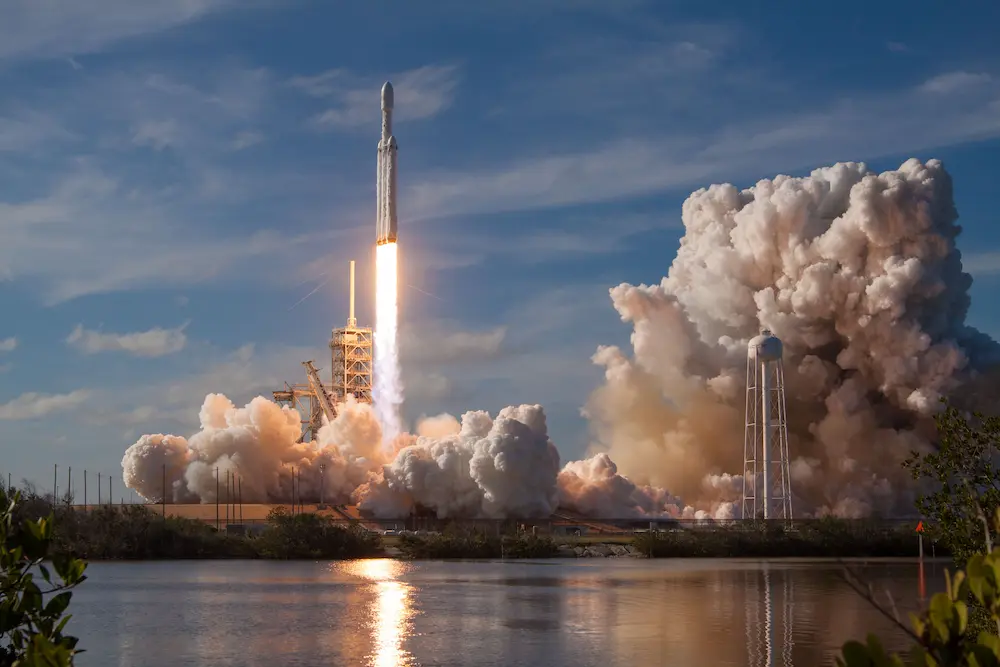
The Falcon Heavy is a cost-effective option for launching payloads into space.
The rise of private space companies
With private space companies, the opportunity for civilians to book a trip to space similar to booking a flight came closer to reality. Dennis Tito was the first private citizen to pay for a trip to space with a trip to the ISS from April 28th to May 6th, 2001 for $20 million dollars. Tito purchased his experience through Space Adventures Inc. which was founded in 1998 and offers a variety of different space experiences. They even acquired Zero Gravity Corporation, NASA’s provider of Reduced Gravity Training (not in space) for its astronauts, in 2008. They offer similar experiences for private individuals starting at about $8,200 as of this publishing (December 2022).
Space Adventures sent seven other space tourists to the ISS through 2009, but due to a number of factors, Space Adventures had to put their ISS offerings on hold until 2021 when they were able to purchase two Soyuz seats due to NASA moving their contract to SpaceX. Space Adventures sent two people to the ISS via the Roscosmos Soyuz rocket in December 2021 and is working on expanding its offerings.
In addition to Elon Musk’s SpaceX, there are a number of other private space companies getting into the commercial spaceflight/ space tourism market, most notably Richard Branson’s Virgin Galactic and Jeff Bezos’s Blue Origins.
Flight Providers & Rates
What are the current rates for commercial spaceflight tickets? What commercial spaceflight trips have already happened? All prices are per person/ per seat.
SpaceX has had the most experience in sending humans to space thanks to its partnership with NASA and Musk has made it clear that he wants to make space travel an option for the public. To date, SpaceX has offered two commercial spaceflight options and has one big one planned for the future:
- SpaceX completed a Multi-Day Orbital Voyage, the first of their new plan to offer private astronaut experiences through their NASA partnership.
- Estimated $55 million for a 3-day stay inside a modified SpaceX Dragon capsule orbiting the Earth at 357 miles (574 km) with three crewmates, sponsored by billionaire Jared Isaacman to raise money for St Jude’s Children’s Hospital
- Partnership between SpaceX and Houston-based Axiom Space Inc.
- $55 million for a 10-day trip to ISS at 408 km with a weeklong (8-day) stay in the orbital lab.
- Expected to continue in 2023
- Axiom plans to build a stand-alone space station to replace the ISS with the first module expected to launch in 2024.
- Steve Aoki: American DJ and record producer
- Everyday Astronaut Tim Dodd: American science communicator, content creator, photographer, and musician
- Yemi A.D.: Czech choreographer, art director and performer
- Rhiannon Adam: Irish photographer
- Karim Iliya: British photographer and filmmaker
- Brendan Hall: American filmmaker and photographer
- Dev Joshi: Indian television actor
- Choi Seung-hyun (stage name: T.O.P.): South Korean rapper, singer, songwriter, record producer, and actor
- Cost is unknown, likely a minimum of $500 million
2. Blue Origin
Blue Origin: currently offers a 100km 12-minute ride to the Karman Line, the recognized boundary between Earth’s atmosphere and outer space; pricing is still unclear and dependent on a variety of factors
- On July 2021, Jeff and Mark Bezos went into space on the New Shepard rocket with Oliver Daemen (who won the trip through an auction bid of around 28 million) and honored guest Wally Funk (a member of Mercury 13, the private program in which women trained to be astronauts but ultimately never went to space)
- Blue Origin has completed 6 commercial space flights as of this publishing. Some “honorable guests” have been invited free of charge, such as Funk and actor William Shatner (Captain Kirk from the original Star Trek). Some have been sponsored or have received special deals due to their nonprofit status.
- $28 million winning auction bid for the first flight ( $19 million was donated)
- $1 million for a board member of a nonprofit
- About $1.25 for a Dude Perfect comedy group crew member, hosted by MoonDAO in August 2022
3. Virgin Galactic Subortbital Joy Ride
Virgin Galactic Subortbital Joy Ride: $450,000 for a 90-minute ride to suborbital space 50km above sea level
- In July 2021, founder Richard Branson flew to the edge of Earth’s atmosphere with two pilots and three other Virgin Galactic employees as the first test of commercial spaceflight for the company
- Each VSS Unity SpaceShipTwo carries up to four passengers
- Expected flights are currently anticipated to begin in 2023
- Includes training accommodations and amenities; launches from New Mexico
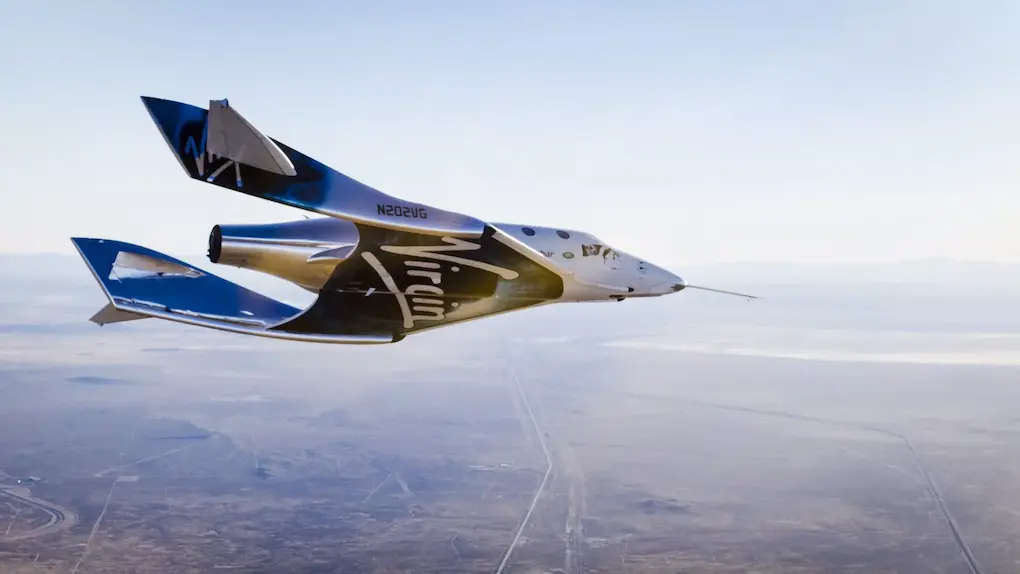
4. Roscosmos/ Space Adventures Customized ISS Trip
Roscosmos/ Space Adventures Customized ISS Trip: $50-60million for a 12-day trip to the ISS at 408 km
- In October 2021 an actress and director shot scenes for the first movie filmed in space
- December 2021 Japanese billionaire Yusaku Maezawa and Yozo Hirano for two days (same billionaire planning to go to the moon with SpaceX)
- With the current situation between Russia and Ukraine, this option is effectively nonexistent currently
5. Space Perspective
Space Perspective: a six-hour balloon ride to space/ the stratosphere on their “Spaceship Neptune” at $125,000
- Rides are currently scheduled to begin by the end of 2024.
- A pressurized capsule will be slowly lifted by a football-field-sized hydrogen-filled balloon 19 miles (30 km) into the stratosphere, about 3 times the altitude of commercial planes.
- The passenger cabin features a bar, bathroom, and windows for sightseeing and is expected to carry 8 passengers and 1 pilot per trip.
6. Aurora Space Station (no longer in development)
Aurora Space Station was supposed to be the world’s first luxury space hotel, offering a 12-day stay for $9.5 million allowing them to free float, observe space and earth, practice hydroponics and play in a hologram deck, but they shut down operations and refunded all deposits in March 2021. They received a lot of media attention and therefore are noted here due to that notoriety.
Conclusion: the current cost of flying to space
Currently, it is only available to those who can spend an average of $250,000 to $500,000 for suborbital trips (about a fifteen-minute ride to the edge of space and back) or flights to actual orbit at more than $50 million per seat (though typically a longer trip than 15 minutes).
It could be free/ discounted if you can find a sponsor, often for nonprofit/ charity purposes, or if you are someone of notoriety that can help spread the company’s mission.
Waitlists are available for most offerings, with a deposit, with many stretching years into the future, which might end up helping you have a spot at a more reasonable price in the future if you can save up.
Many companies are looking to provide extended stay options on private space stations in the future, similar to how you might book a flight somewhere and stay in a hotel for a few days. Again, for the immediate future, this is estimated to cost tens of millions of dollars. The biggest portion of the cost would be launching them, though it is still estimated that a couple million dollars will be needed to cover the expenses of your stay while you are on the space station, whether that is included in the ticket price or added on top of that.
Many companies are hopeful they can eventually price a trip to space down to $100,000 but that will likely take some time, even with the cost-saving measures of reusable boosters. Many forms of recent technology have evolved exponentially in recent years and with dropping price rates as well. Just as plane travel was originally prohibitively expensive, but has now become fairly reasonable for the average consumer, the hope is that the same will eventually happen with space tourism, but we will have to see how long that takes.
While the possibility of going to space is still out of reach for many of us, hopefully, the advancements in recent years and those yet to come will help to continually lower the costs of going to space, just as has occurred in many other fields. This author, for one, truly hopes that the interest of the elite who are currently able to participate in these offerings will spur research and development, not just of space tourism but space exploration in general, to help fuel a quicker journey to space access for all

Written by Sarah Hoffschwelle
Sarah Hoffschwelle is a freelance writer who covers a combination of topics including astronomy, general science and STEM, self-development, art, and societal commentary. In the past, Sarah worked in educational nonprofits providing free-choice learning experiences for audiences ages 2-99. As a lifelong space nerd, she loves sharing the universe with others through her words. She currently writes on Medium at https://medium.com/@sarah-marie and authors self-help and children’s books.
Wow! There's more to read 🚀
This page is part of our collection of articles about astronauts . If you enjoyed the read, then you’ll love the following articles.

How much do astronauts get paid?
The requirements to become an astronaut are extremely rigorous. Does their salary match the difficulty of their profession?
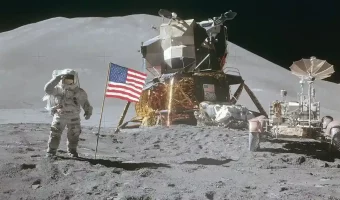
How many flags are on the Moon? The up-to-date list
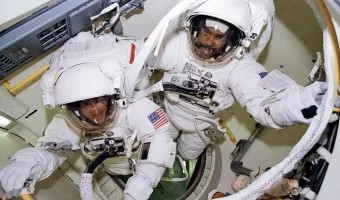
What are the different types of astronauts suit?
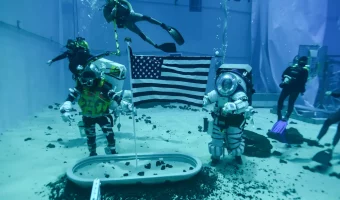
How do astronauts train for zero-gravity environments?
Space Tourism: Can A Civilian Go To Space?

2021 has been a busy year for private space tourism: overall, more than 15 civilians took a trip to space during this year. In this article, you will learn more about the space tourism industry, its history, and the companies that are most likely to make you a space tourist.
What is space tourism?
Brief history of space tourism, space tourism companies, orbital and suborbital space flights, how much does it cost for a person to go to space, is space tourism worth it, can i become a space tourist, why is space tourism bad for the environment.
Space tourism is human space travel for recreational or leisure purposes . It’s divided into different types, including orbital, suborbital, and lunar space tourism.
However, there are broader definitions for space tourism. According to the Space Tourism Guide , space tourism is a commercial activity related to space that includes going to space as a tourist, watching a rocket launch, going stargazing, or traveling to a space-focused destination.
The first space tourist was Dennis Tito, an American multimillionaire, who spent nearly eight days onboard the International Space Station in April 2001. This trip cost him $20 million and made Tito the first private citizen who purchased his space ticket. Over the next eight years, six more private citizens followed Tito to the International Space Station to become space tourists.
As space tourism became a real thing, dozens of companies entered this industry hoping to capitalize on renewed public interest in space, including Blue Origin in 2000 and Virgin Galactic in 2004. In the 2000s, space tourists were limited to launches aboard Russian Soyuz aircraft and only could go to the ISS. However, everything changed when the other players started to grow up on the market. There are now a variety of destinations and companies for travels to space.
There are now six major space companies that are arranging or planning to arrange touristic flights to space:
- Virgin Galactic;
- Blue Origin;
- Axiom Space;
- Space Perspective.
While the first two are focused on suborbital flights, Axiom and Boeing are working on orbital missions. SpaceX, in its turn, is prioritizing lunar tourism in the future. For now, Elon Musk’s company has allowed its Crew Dragon spacecraft to be chartered for orbital flights, as it happened with the Inspiration4 3-day mission . Space Perspective is developing a different balloon-based system to carry customers to the stratosphere and is planning to start its commercial flights in 2024.
Orbital and suborbital flights are very different. Taking an orbital flight means staying in orbit; in other words, going around the planet continually at a very high speed to not fall back to the Earth. Such a trip takes several days, even a week or more. A suborbital flight in its turn is more like a space hop — you blast off, make a huge arc, and eventually fall back to the Earth, never making it into orbit. A flight duration, in this case, ranges from 2 to 3 hours.
Here is an example: a spaceflight takes you to an altitude of 100 km above the Earth. To enter into orbit — make an orbital flight — you would have to gain a speed of about 28,000 km per hour (17,400 mph) or more. But to reach the given altitude and fall back to the Earth — make a suborbital flight — you would have to fly at only 6,000 km per hour (3,700 mph). This flight takes less energy, less fuel; therefore, it is less expensive.
- Virgin Galactic: $250,000 for a 2-hour suborbital flight at an altitude of 80 km;
- Blue Origin: approximately $300,000 for 12 minutes suborbital flight at an altitude of 100 km;
- Axiom Space: $55 million for a 10-day orbital flight;
- Space Perspective: $125,000 for a 6-hour flight to the edge of space (32 km above the Earth).
The price depends, but remember that suborbital space flights are always cheaper.
What exactly do you expect from a journey to space? Besides the awesome impressions, here is what you can experience during such a trip:
- Weightlessness . Keep in mind that during a suborbital flight you’ll get only a couple of minutes in weightlessness, but it will be truly fascinating .
- Space sickness . The symptoms include cold sweating, malaise, loss of appetite, nausea, fatigue, and vomiting. Even experienced astronauts are not immune from it!
- G-force . 1G is the acceleration we feel due to the force of gravity; a usual g-force astronauts experience during a rocket launch is around 3gs. To understand how a g-force influences people , watch this video.
For now, the most significant barrier for space tourism is price. But air travel was also once expensive; a one-way ticket cost more than half the price of a new car . Most likely, the price for space travel will reduce overtime as well. For now, you need to be either quite wealthy or win in a competition, as did Sian Proctor, a member of Inspiration4 mission . But before spending thousands of dollars on space travel, here is one more fact you might want to consider.
Rocket launches are harmful to the environment in general. During the burning of rocket fuels, rocket engines release harmful gases and soot particles (also known as black carbon) into the upper atmosphere, resulting in ozone depletion. Think about this: in 2018 black-carbon-producing rockets emitted about the same amount of black carbon as the global aviation industry emits annually.
However, not all space companies use black carbon for fuel. Blue Origin’s New Shepard rocket has a liquid hydrogen-fuelled engine: hydrogen doesn’t emit carbon but simply turns into water vapor when burning.
The main reason why space tourism could be harmful to the environment is its potential popularity. With the rising amount of rocket launches the carbon footprint will only increase — Virgin Galactic alone aims to launch 400 of these flights annually. Meanwhile, the soot released by 1,000 space tourism flights could warm Antarctica by nearly 1°C !
Would you want to become a space tourist? Let us know your opinion on social media and share the article with your friends, if you enjoyed it! Also, the Best Mobile App Awards 2021 is going on right now, and we would very much appreciate it if you would vote for our Sky Tonight app . Simply tap "Vote for this app" in the upper part of the screen. No registration is required!
Axiom names first private crew paying $55 million for a trip to the ISS
A $55 million orbital vacation.
By Joey Roulette
Share this story
:format(webp)/cdn.vox-cdn.com/uploads/chorus_asset/file/22260805/Ax1_Crew.jpg)
An American real estate investor, a Canadian investor, and a former Israeli Air Force pilot are paying $55 million each to be part of the first fully private astronaut crew to journey to the International Space Station. The trio will hitch a ride on SpaceX’s Crew Dragon capsule early next year, with a veteran NASA astronaut as the commander.
The Ax-1 mission, arranged by Houston, Texas-based space tourism company Axiom Space, is a watershed moment for the space industry as companies race to make space travel more accessible to private customers instead of governments. Private citizens have trekked to the space station in the past, but the Ax-1 mission marks the first to use a commercially built astronaut capsule: SpaceX’s Crew Dragon, which flew its first two crews to the ISS last year .
A watershed moment for the space industry as companies race to make space travel more accessible to private customers
“As the first fully private mission to go to the ISS, we feel an enormous responsibility to do it well,” Michael López-Alegría, a veteran astronaut and the mission’s commander, told The Verge on Tuesday . “We realize that this is the trend-setter, the bar-setter for the future, and so our goal is to really exceed all expectations.”
Larry Connor, an entrepreneur and nonprofit activist investor; Mark Pathy, the Canadian investor and philanthropist; and Eytan Stibbe, the former Israeli fighter pilot and an impact investor, were revealed by Axiom on Tuesday morning as the company’s inaugural crew. Connor, 71, is president of The Connor Group, a luxury real estate investment firm based in Ohio. He’d become the second-oldest person to fly to space after John Glenn, who flew the US space shuttle Discovery at 77 years old.
The crew’s flight to the space station, an orbital laboratory some 250 miles above Earth, will take two days. They’ll then spend about eight days aboard the station’s US segment, where they’ll take part “in research and philanthropic projects,” Axiom said in a statement. Living alongside working astronauts from the US, Russia, and likely Germany, the private crew members will roll out sleeping bags somewhere on the station.
“There aren’t any astronaut crew quarters for us, which is fine. Sleeping in Zero-G is pretty much the same wherever you are once you close your eyes,” López-Alegría said.
NASA updated its policies in 2019 to allow private astronaut flights to the ISS as part of a broader push to encourage commercial opportunities in space. The agency had previously opposed private visits to the ISS on US spacecraft. Seven private citizens flew to the station as wealthy tourists on separate missions in the early 2000s aboard Russia’s Soyuz vehicles.
A $35,000 price tag per night, per person on the ISS
Private stays on the space station will have a hefty price tag, according to NASA’s 2019 announcement. It’ll cost $11,250 per astronaut per day to use the life support systems and toilet, $22,500 per day for all necessary crew supplies (like food, air, medical supplies, and more), and $42 per kilowatt-hour for power. That tallies to a nightly rate of about $35,000 per person, which, for the four crew members on the Ax-1 mission — including Commander López-Alegría — totals to $1.1 million for an eight-night stay.
:format(webp)/cdn.vox-cdn.com/assets/4448327/iss_wikimedia.jpg)
Those nightly costs are included in the $55 million price the private astronauts are already paying, Axiom says. The company bills itself as a “turnkey, full-service mission provider that interfaces with all other parties (e.g. NASA) for” the astronauts, an Axiom spokesman said. “Any and all necessary costs are part of Axiom’s ticket price.”
The Ax-1 mission will have to be approved by the Multilateral Crew Operations Panel, the space station’s managing body of partner countries that includes the US, Russia, Canada, Japan, and others. That approval process kicked off today, López-Alegría said. “I don’t think that there’s any doubt that the background and qualifications of the crew are more than adequate to be accepted by the MCOP, so I feel good about that,” he added.
SpaceX’s Crew Dragon capsule, an acorn-shaped pod with seats for seven, was approved last year by NASA under its Commercial Crew Program to fly humans to the space station. Under that roughly $4.5 billion program, SpaceX developed Crew Dragon alongside its rival Boeing, which is about a year away from certifying its Starliner capsule for human flights. Both companies have contracts with NASA to fly six missions carrying US astronauts to space.
The Ax-1 mission was announced early last year . It is the second space tourism effort for SpaceX, which announced around the same time that it is also working with space tourism company Space Adventures to send up to four private citizens into orbit around the Earth sometime in 2022.
:format(webp)/cdn.vox-cdn.com/uploads/chorus_asset/file/22261032/crew_dragon.jpg)
Space tourism in recent years has sparked a wave of interest from the ultra-wealthy and investors as a growing field of space companies prove out hardware and ramp up uncrewed test flights in and around space. SpaceX founder and CEO Elon Musk, now the richest person in the world , has made normalizing space travel and colonizing Mars SpaceX’s top priority. Billionaire businessman Richard Branson’s Virgin Galactic, which offers groups of four a few minutes of weightlessness in its massive spaceplane for a few hundred thousand dollars, became the first publicly traded space tourism company in 2019. And billionaire Amazon owner Jeff Bezos’ space firm Blue Origin will soon offer similar suborbital experiences with its vertically launched New Shepard rocket.
Axiom’s chief executive Mike Suffredini co-founded the company in 2016 after spending 10 years as NASA’s ISS program manager. Already, the company is building its own modules called “Axiom Station” designed to attach to the ISS, offering room for science experiments and more tourists. Ax-1 “is just the first of several Axiom Space crews,” he said in a statement.
López-Alegría, who has flown four times to space as a NASA astronaut, said he’s met with Connor, Pathy, and Stibbe a few times at SpaceX’s California headquarters and in Florida during SpaceX’s Crew-1 mission last year. He’ll be in charge of training them in person beginning a few months prior to the flight.
“They’re very individual, but they all have a very common thread, and that is they really want this to be a successful mission that paves the way for future private astronaut missions,” López-Alegría said. “It’s a good crew.”
The US finally takes aim at truck bloat
Openai releases o1, its first model with ‘reasoning’ abilities, ifixit made its own usb-c soldering iron, and it’s already a joy, the entire staff of beloved game publisher annapurna interactive has reportedly resigned, microsoft lays off 650 more xbox employees.
More from Science
:format(webp)/cdn.vox-cdn.com/uploads/chorus_asset/file/23935561/acastro_STK103__04.jpg)
Amazon — like SpaceX — claims the labor board is unconstitutional
:format(webp)/cdn.vox-cdn.com/uploads/chorus_asset/file/25288452/246992_AI_at_Work_REAL_COST_ECarter.png)
How much electricity does AI consume?
:format(webp)/cdn.vox-cdn.com/uploads/chorus_asset/file/25287681/1371856480.jpg)
A Big Tech-backed campaign to plant trees might have taken a wrong turn
:format(webp)/cdn.vox-cdn.com/uploads/chorus_asset/file/25287408/2003731596.jpg)
SpaceX successfully launches Odysseus in bid to return US to the lunar surface
MIT Technology Review
- Newsletters
Space is all yours—for a hefty price
Commercial spaceflight is now officially a thing. But is it a transcendent opportunity for the masses, or just another way for rich people to show off?
- Adam Mann archive page

Private citizens have been buying their way into the heavens for decades. In the 1980s, McDonnell Douglas engineer Charles Walker became the first nongovernment individual to fly in space when his company bought him a seat on three NASA space shuttle missions. In 2001, American entrepreneur Dennis Tito dished out a reported $20 million to fly on a Russian Soyuz rocket to the International Space Station (ISS) and spend eight days floating in microgravity.
But beyond those few flights, nothing much happened.
At least not until last year. After decades of development and several serious accidents, three companies—SpaceX, Blue Origin, and Virgin Galactic—launched their first tourist flights in 2021. William Shatner rode a Blue Origin vehicle to the edge of space in October. Former NFL star and Good Morning America host Michael Strahan took a similar ride in December. Even NASA, which was once hostile to space tourism, has come around and released a pricing policy for private astronaut missions, offering to bring someone to orbit for around $55 million.
Okay, so it’s a new era—but what does it mean? Do these forays represent a future in which even the average person might book a celestial flight and bask in the splendor of Earth from above? Or is this just another way for the ultrawealthy to flash their cash while simultaneously ignoring and exacerbating our existential problems down on the ground? Nearly all those 2021 escapades were the result of efforts by three billionaires: Elon Musk, Jeff Bezos, and Richard Branson. Branson is a mere single-digit billionaire, whereas Bezos and Musk have wealth measured in the hundreds of billions.
“The greatly undue influence of wealth in this country—to me that’s at the heart of my issues with space tourism as it’s unfolding,” says Linda Billings, a communications researcher who consults for NASA and has written about the societal impacts of spaceflight for more than 30 years. “We are so far away from making this available to your so-called average person.”
Each spot on Virgin’s suborbital spaceplane, the cheapest way to space at the moment, will set somebody back $450,000. A single seat on Blue Origin’s initial suborbital launch sold at auction for $28 million, and the undisclosed price tag of SpaceX’s all-civilian Inspiration4 mission, which spent three days in orbit before splashing down off the coast of Florida, has been estimated at $50 million per passenger.
Not only are such flights ridiculously far out of financial reach for the average person, says Billings, but they aren’t achieving any real goals—far from ideal given our terrestrial problems of inequality, environmental collapse, and a global pandemic. “We’re not really learning anything,” she says. “There doesn’t seem to be a whole lot of thought or conscience in the people engaging in these space tourism missions.”
Laura Forczyk, owner of the space consulting firm Astralytical, thinks it’s misguided to focus strictly on the money aspect. “The narrative [last year] was billionaires in space, but it’s so much more than that,” says Forczyk, who wrote the book Becoming Off-Worldly , published in January, in which she interviewed both government and private astronauts about why they go to space.
Forczyk sees the flights as great opportunities to conduct scientific experiments. All three of the commercial tourist companies have carried research projects in the past, studying things like fluid dynamics, plant genetics, and the human body’s reaction to microgravity. And yes, the rich are the target audience, but the passengers on SpaceX’s Inspiration4 included artist and scientist Sian Proctor and data engineer Chris Sembroski, who won their tickets through contests, as well as St. Jude Children’s Research Hospital ambassador Hayley Arceneaux (the trip helped her raise $200 million in donations for the hospital). Blue Origin gave free trips to aviation pioneer Wally Funk, who as a woman had been barred from becoming an Apollo astronaut, and NASA astronaut Alan Shepard’s daughter Laura.
Forczyk also cites Iranian space tourist Anousheh Ansari, who flew to the ISS in 2006. “She talked about how she grew up in a war zone in Iran, and how [the flight] helped her see the world as interconnected,” Forczyk says.
Billings thinks the value of such testimonials is pretty low. “All these people are talking to the press about how wonderful the experience was,” she says. “But to listen to someone else tell you about how exciting it was to climb Mt. Everest doesn’t convey the actual experience.”
As with an Everest trek, there’s the risk of death to consider. Historically, spaceflight has had a fatality rate of just under 4%—roughly 266,000 times greater than for commercial airplanes. Virgin suffered two major disasters during testing, killing a total of four employees and injuring four more. “A high-profile accident will come; it’s inevitable,” says Forczyk. But even that, she predicts, won’t end space tourism. People continue to climb Everest, she notes, despite the danger.
Another question is how space tourism might affect the planet. A 90-minute jaunt on Virgin Galactic’s suborbital spaceplane is roughly as polluting as a 10-hour transatlantic flight. Other calculations suggest that a rocket launch can produce 50 to 75 tons of carbon dioxide per passenger, compared with just a few tons per passenger from a commercial airplane.
Experts warn that even Blue Origin’s New Shepard, which burns hydrogen and oxygen and emits water, could affect the climate since its combustion products are injected high into the stratosphere, where their ultimate impact has yet to be understood.
The Federal Aviation Administration oversees all spaceflight in the US and might strengthen safety and environmental regulations. The agency currently has a moratorium on new regulations until 2023, which was designed to give the nascent industry time to develop before legislators came in with too much red tape. But few lawmakers or citizens are clamoring for more regulation.
“There are a lot of other things for people to worry about than whether or not only billionaires get to fly in space,” says Marcia Smith, the founder and editor of the news website SpacePolicyOnline.com, which covers space programs around the world.
Nobody has yet fully articulated a compelling reason to spend enormous sums on private spaceflight. It may have incidental value for science and engineering, or offer a small number of people a sense of transcendence.
But at the moment, it seems we do it mainly because we think it’s cool.
Keep Reading
Most popular.

How to fix a Windows PC affected by the global outage
There is a known workaround for the blue screen CrowdStrike error that many Windows computers are currently experiencing. Here’s how to do it.
- Rhiannon Williams archive page

A controversial Chinese CRISPR scientist is still hopeful about embryo gene editing. Here’s why.
He Jiankui, who went to prison for three years for making the world’s first gene-edited babies, talked to MIT Technology Review about his new research plans.
- Zeyi Yang archive page

Google DeepMind’s new AI systems can now solve complex math problems
AlphaProof and AlphaGeometry 2 are steps toward building systems that can reason, which could unlock exciting new capabilities.

OpenAI has released a new ChatGPT bot that you can talk to
The voice-enabled chatbot will be available to a small group of people today, and to all ChatGPT Plus users in the fall.
- Melissa Heikkilä archive page
Stay connected
Get the latest updates from mit technology review.
Discover special offers, top stories, upcoming events, and more.
Thank you for submitting your email!
It looks like something went wrong.
We’re having trouble saving your preferences. Try refreshing this page and updating them one more time. If you continue to get this message, reach out to us at [email protected] with a list of newsletters you’d like to receive.
- SUGGESTED TOPICS
- The Magazine
- Newsletters
- Managing Yourself
- Managing Teams
- Work-life Balance
- The Big Idea
- Data & Visuals
- Case Selections
- HBR Learning
- Topic Feeds
- Account Settings
- Email Preferences
The Commercial Space Age Is Here
- Matthew Weinzierl
- Mehak Sarang

In May of 2020, SpaceX made history as the first private company to send humans into space. This marks not only a tremendous technological achievement, but also the first indication that an entirely new “space-for-space” industry — that is, goods and services designed to supply space-bound customers — could be close at hand. In the first stage of this burgeoning economy, private companies must sell to NASA and other government customers, since today, those organizations are the only source of in-space demand. But as SpaceX has demonstrated, private companies now have not just the desire, but also the ability to send people into space. And once we have private citizens in space, SpaceX and other companies will be poised to supply the demand they’ve created, creating a market that could dwarf the current government-led space industry (and eventually, the entire terrestrial economy as well). It’s a huge opportunity — now our task is simply to seize it.
Private space travel is just the beginning.
There’s no shortage of hype surrounding the commercial space industry. But while tech leaders promise us moon bases and settlements on Mars, the space economy has thus far remained distinctly local — at least in a cosmic sense. Last year, however, we crossed an important threshold: For the first time in human history, humans accessed space via a vehicle built and owned not by any government, but by a private corporation with its sights set on affordable space settlement . It was the first significant step towards building an economy both in space and for space. The implications — for business, policy, and society at large — are hard to overstate.
- MW Matthew Weinzierl is the Joseph and Jacqueline Elbling Professor of Business Administration at Harvard Business School and a research associate at the National Bureau of Economic Research. His teaching and research focus on the design of economic policy and the economics and business of space.
- MS Mehak Sarang is a Research Associate at Harvard Business School and the Lunar Exploration Projects Lead for the MIT Space Exploration Initiative.
Partner Center
- Share full article
Advertisement
Supported by
The Future of Space Tourism Is Now. Well, Not Quite.
From zero-pressure balloon trips to astronaut boot camps, reservations for getting off the planet — or pretending to — are skyrocketing. The prices, however, are still out of this world.

By Debra Kamin
Ilida Alvarez has dreamed of traveling to space since she was a child. But Ms. Alvarez, a legal-mediation firm owner, is afraid of flying, and she isn’t a billionaire — two facts that she was sure, until just a few weeks ago, would keep her fantasy as out of reach as the stars. She was wrong.
Ms. Alvarez, 46, and her husband, Rafael Landestoy, recently booked a flight on a 10-person pressurized capsule that — attached to a massive helium-filled balloon — will gently float to 100,000 feet while passengers sip champagne and recline in ergonomic chairs. The reservation required a $500 deposit; the flight itself will cost $50,000 and last six to 12 hours.
“I feel like it was tailor-made for the chickens like me who don’t want to get on a rocket,” said Ms. Alvarez, whose flight, organized by a company called World View , is scheduled to depart from the Grand Canyon in 2024.
Less than a year after Jeff Bezos and Richard Branson kicked off a commercial space race by blasting into the upper atmosphere within weeks of each other last summer, the global space tourism market is skyrocketing, with dozens of companies now offering reservations for everything from zero-pressure balloon trips to astronaut boot camps and simulated zero-gravity flights. But don’t don your spacesuit just yet. While the financial services company UBS estimates the space travel market will be worth $3 billion by 2030, the Federal Aviation Administration has yet to approve most out-of-this-world trips, and construction has not started on the first space hotel. And while access and options — not to mention launchpads — are burgeoning, space tourism remains astronomically expensive for most.
First, what counts as space travel?
Sixty miles (about 100 kilometers) above our heads lies the Kármán line, the widely accepted aeronautical boundary of the earth’s atmosphere. It’s the boundary used by the Féderátion Aéronautique Internationale, which certifies and controls global astronautical records. But many organizations in the United States, including the F.A.A. and NASA, define everything above 50 miles to be space.
Much of the attention has been focused on a trio of billionaire-led rocket companies: Mr. Bezos’ Blue Origin , whose passengers have included William Shatner; Mr. Branson’s Virgin Galactic , where tickets for a suborbital spaceflight start at $450,000; and Elon Musk’s SpaceX , which in September launched an all-civilian spaceflight, with no trained astronauts on board. Mr. Branson’s inaugural Virgin Galactic flight in 2021 reached about 53 miles, while Blue Origin flies above the 62-mile mark. Both are eclipsed by SpaceX, whose rockets charge far deeper in to the cosmos, reaching more than 120 miles above Earth.
Balloons, like those operated by World View, don’t go nearly as high. But even at their maximum altitude of 18 or 19 miles, operators say they float high enough to show travelers the curvature of the planet, and give them a chance to experience the overview effect — an intense perspective shift that many astronauts say kicks in when you view Earth from above.
Now, how to get there …
Blue Origin and Virgin Galactic, which are both licensed for passenger space travel by the F.A.A., are open for ticket sales. (Blue Origin remains mum on pricing.) Both companies currently have hundreds or even thousands of earthlings on their wait lists for a whirl to the edge of space. SpaceX charges tens of millions of dollars for its further-reaching flights and is building a new facility in Texas that is currently under F.A.A. review.
Craig Curran is a major space enthusiast — he’s held a reserved seat on a Virgin Galactic flight since 2011 — and the owner of Deprez Travel in Rochester, N.Y. The travel agency has a special space travel arm, Galactic Experiences by Deprez , through which Mr. Curran sells everything from rocket launch tickets to astronaut training.
Sales in the space tourism space, Mr. Curran acknowledges, “are reasonably difficult to make,” and mostly come from peer-to-peer networking. “You can imagine that people who spend $450,000 to go to space probably operate in circles that are not the same as yours and mine,” he said.
Some of Mr. Curran’s most popular offerings include flights where you can experience the same stomach-dropping feeling of zero gravity that astronauts feel in space, which he arranges for clients via chartered, specialized Boeing 727s that are flown in parabolic arcs to mimic being in space. Operators including Zero G also offer the service; the cost is around $8,200.
You can almost count the number of completed space tourist launches on one hand — Blue Origin has had four; SpaceX, two. Virgin Galactic, meanwhile, on Thursday announced the launch of its commercial passenger service, previously scheduled for late 2022, was delayed until early 2023. Many of those on waiting lists are biding their time before blastoff by signing up for training. Axiom Space, which contracts with SpaceX, currently offers NASA-partnered training at Houston’s Johnson Space Center. Virgin Galactic, which already offers a “customized Future Astronaut Readiness program” at its Spaceport America facility in New Mexico, is also partnering with NASA to build a training program for private astronauts.
Would-be space tourists should not expect the rigor that NASA astronauts face. Training for Virgin Galactic’s three-hour trips is included in the cost of a ticket and lasts a handful of days; it includes pilot briefings and being “fitted for your bespoke Under Armour spacesuit and boots,” according to its website.
Not ready for a rocket? Balloon rides offer a less hair-raising celestial experience.
“We go to space at 12 miles an hour, which means that it’s very smooth and very gentle. You’re not rocketing away from earth,” said Jane Poynter, a co-founder and co-chief executive of Space Perspective , which is readying its own touristic balloon spaceship, Spaceship Neptune. If all goes according to plan, voyages are scheduled to begin departing from Florida in 2024, at a cost of $125,000 per person. That’s a fraction of the price tag for Blue Origin and Virgin Galactic, but still more than double the average annual salary of an American worker.
Neither Space Perspective nor World View has the required approval yet from the F.A.A. to operate flights.
Unique implications
Whether a capsule or a rocket is your transport, the travel insurance company battleface launched a civilian space insurance plan in late 2021, a direct response, said chief executive Sasha Gainullin, to an increase in space tourism interest and infrastructure. Benefits include accidental death and permanent disablement in space and are valid for spaceflights on operators like SpaceX, Blue Origin and Virgin Galactic, as well as on stratospheric balloon rides. They’ve had many inquiries, Mr. Gainullin said, but no purchases just yet.
“Right now it’s such high-net-worth individuals who are traveling to space, so they probably don’t need insurance,” he said. “But for quote-unquote regular travelers, I think we’ll see some takeups soon.”
And as the industry grows, so perhaps will space travel’s impact on the environment. Not only do rocket launches have immense carbon footprints, even some stratospheric balloon flights have potentially significant implications: World View’s balloons are powered by thousands of cubic meters of helium, which is a limited resource . But Ted Parson, a professor of environmental law at the University of California, Los Angeles, said that space travel’s environmental impact is still dwarfed by civil aviation. And because space travel is ultra-niche, he believes it’s likely to stay that way.
“Despite extensive projections, space tourism is likely to remain a tiny fraction of commercial space exploration,” he said. “It reminds me of tourism on Mt. Everest. It’s the indulgence of very rich people seeking a transcendent, once-in-a-lifetime experience, and the local environmental burden is intense.”
Stay a while?
In the future, space enthusiasts insist, travelers won’t be traveling to space just for the ride. They’ll want to stay a while. Orbital Assembly Corporation, a manufacturing company whose goal is to colonize space, is currently building the world’s first space hotels — two ring-shaped properties that will orbit Earth, called Pioneer Station and Voyager Station. The company, quite optimistically, projects an opening date of 2025 for Pioneer Station, with a capacity of 28 guests. The design for the larger Voyager Station , which they say will open in 2027, promises villas and suites, as well as a gym, restaurant and bar. Both provide the ultimate luxury: simulated gravity. Axiom Space , a space infrastructure company, is currently building the world’s first private space station; plans include Philippe Starck-designed accommodations for travelers to spend the night.
Joshua Bush, chief executive of travel agency Avenue Two Travel , has sold a handful of seats on upcoming Virgin Galactic flights to customers. The market for space travel (and the sky-high prices that come with it), he believes, will evolve much like civilian air travel did.
“In the beginning of the 20th century, only very affluent people could afford to fly,” he said. “Just as we have Spirit and Southwest Airlines today, there will be some sort of equivalent of that in space travel, too. Hopefully within my lifetime.”

52 Places for a Changed World
The 2022 list highlights places around the globe where travelers can be part of the solution.
Follow New York Times Travel on Instagram , Twitter and Facebook . And sign up for our weekly Travel Dispatch newsletter to receive expert tips on traveling smarter and inspiration for your next vacation. Dreaming up a future getaway or just armchair traveling? Check out our 52 Places for a Changed World for 2022.
What’s Up in Space and Astronomy
Keep track of things going on in our solar system and all around the universe..
Never miss an eclipse, a meteor shower, a rocket launch or any other 2024 event that’s out of this world with our space and astronomy calendar .
Four private astronauts aboard an ambitious space mission led by a billionaire entrepreneur traveled farther from Earth than any other human being in more than half a century, reaching altitudes not visited by any astronaut since the Apollo moon missions .
A spacecraft operated by the European Space Agency and Japan made its closest approach yet to Mercury, sending back sharp, black-and-white images of the planet’s barren, speckled surface at sunrise .
Leaving behind the two NASA astronauts it took to the International Space Station three months ago, Boeing’s troubled Starliner spacecraft is set to begin its return to Earth soon.
A speeding star is traveling through the Milky Way at around a million miles an hour. It could be moving fast enough to break free from the gravitational clutches of the galaxy .
Is Pluto a planet? And what is a planet, anyway? Test your knowledge here .
- Skip to main content
- Keyboard shortcuts for audio player
The Polaris Dawn spacewalk is SpaceX’s ‘risky adventure’

Geoff Brumfiel

Polaris Dawn lifts off from Pad 39A at the Kennedy Space Center in Florida early Tuesday morning. The crew is set to conduct the first private spacewalk ever in a matter of days. Chandan Khanna/AFP via Getty Images hide caption
A SpaceX rocket lifted off early Tuesday morning carrying four astronauts who hope to conduct the world’s first commercial spacewalk . The launch from the Kennedy Space Center in Florida marks the beginning of one of SpaceX’s highest-stakes missions yet .

Civilian Polaris Dawn spacewalk mission is set to make history next week
If all goes as expected, in a matter of days, Internet entrepreneur Jared Isaacman and SpaceX engineer Sarah Gillis will be the first private astronauts to exit their spacecraft to float above the Earth in spacesuits. They’ll be treated to a majestic view of the planet that’s only been seen by professional astronauts working on official missions from their space agencies.
But experts warn there’s plenty that could go wrong. Spacewalking carries unique risks compared to traveling inside a capsule or visiting the International Space Station. This mission will use several components that have never been tested in space before, including the spacesuits themselves. And it will require skill and cool-headed thinking from the astronauts involved, three of whom have never been to space at all.
Conducting a spacewalk like this is a “risky adventure,” acknowledges Bill Gerstenmaier, SpaceX’s vice president of build and flight reliability, who previously headed NASA’s human spaceflight operations.

NASA will bring stranded astronauts back on SpaceX — not Boeing's Starliner
But he insists that the company is ready: “We’re going to do it as safely as we can, and we’ve got the right protocols and we’ve done the right testing to get ready to go,” Gerstenmaier told reporters at a press briefing last month .
A giant leap, for a price
The mission, known as Polaris Dawn, is a giant leap for commercial space travel. To date, most space tourists have either taken a brief suborbital journey that provides a few moments of weightlessness, or (for significantly more money) traveled to the International Space Station. Isaacman spent a few days in 2021 orbiting earth in a SpaceX capsule.

From left, Scott Poteet, Anna Menon, Sarah Gillis, and Jared Isaacman are set to conduct the first private spacewalk. Gillis and Isaacman will exit their Dragon capsule float above the earth in new spacesuits from the commercial spaceflight company SpaceX. John Kraus/Polaris Program hide caption
He’s now paid an undisclosed sum of money for this mission, which is the first of three scheduled as part of the Polaris program. Isaacman had floated the idea of the second mission being used to service the Hubble Space telescope, but NASA recently said the agency would not pursue it at this time because they’re not sure it’s worth the risks.

These are the 4 astronauts who'll take a trip around the moon next year
On this mission, all four astronauts will don new SpaceX spacesuits before purging the air from their Dragon capsule. Isaacman, the mission commander, and Gillis will then open the hatch and float briefly out of the capsule, connected by umbilical cords that will supply them with oxygen. The mission’s pilot, Scott Poteet, and medical officer and SpaceX employee Anna Menon will remain inside the capsule.
The allure of doing a spacewalk is clear. The view is stunning, says Luca Parmitano, an astronaut for the European Space Agency who has conducted six spacewalks.
“It’s almost as if time stops for a second, or your heart stops for a second, it’s just so beautiful,” he says.
But Parmitano says that spacewalking is also physically and mentally challenging. The suits are pressurized, making them stiff and inflexible.
"At one point during the spacewalk, you’re going to be hot, you’re going to be cold, your hands are going to hurt,” he says. “You have to embrace the suck.”
And there’s a lot that can go wrong. During a spacewalk outside the International Space Station in 2013, Parmitano’s helmet began filling with water from his spacesuit’s cooling system. In zero G, the capillary pressure caused the water to stick to his skin and begin creeping around his head.

Short Wave: Space Camp
What do you know about space take our space camp final exam to find out.
“It covered my eyes, it covered my ears, it went inside my nose,” Parmitano recalls. He was unable to communicate because his radio no longer worked. “I was on my own, isolated. I couldn’t see anything, I couldn’t hear, I couldn’t talk.”
Spacewalks (known in the business as Extravehicular Activities, or EVAs), have always been among the most dangerous parts of space travel. During the first American spacewalks carried out during the Gemini program of the 1960s, crew members frequently experienced problems with their suits, according to Emily Margolis, a curator of contemporary spaceflight at the Smithsonian National Air and Space Museum.
“Of the nine EVAs that took place during project Gemini, three of them actually ended early due to concerns over health and safety,” Margolis says.
For example on Gemini 9, astronaut Gene Cernan was supposed to test a kind of rocket pack to help astronauts move around in space. His suit included a metallic coating to protect him from the exhaust of the rocket pack, but the coating made it far harder to move.

In this image taken from NASA video Italian astronaut Luca Parmitano (lower right) holds a bundle of new pumps for the Alpha Magnetic Spectrometer outside the International Space Station on Dec. 2, 2019. AP/NASA hide caption
One of the paradoxes of spacewalking is that, although space is cold, the lack of atmosphere around the suit can actually cause heat to build up inside. As Cernan struggled to move, he ended up overexerting himself.
“He started to sweat profusely and the moisture in the suit started to fog his vizor,” Margolis says. With his visibility severely impaired, his crewmate cut the EVA short and brought him back inside.
When Cernan returned to Earth, Margolis says, it was determined he’d lost 13 pounds over the mission. “It’s believed that most of that was water weight from the amount that he was sweating during this EVA,” she says.
Spacewalks have become more routine since then, but they remain risky, according to Jonathan Clark, a physician at Baylor College of Medicine who has consulted for both NASA and SpaceX on spacesuits. By his count, around one in five spacewalks encounter some sort of problem.
“Sometimes you can adapt to it, but a lot of times you’ve got to stop the EVA and come back in,” he says.
In the case of Luca Parmitano, the astronaut whose helmet began filling with water, he had little choice but to cut the spacewalk short. Because he couldn’t see, he had to work his way back to the airlock from memory. Eventually fellow spacewalker Chris Cassidy helped him get back inside and close the hatch.

A spacewalk has been canceled after a leak was discovered on a Soyuz capsule
“I don’t take any specific credit for keeping my cool because I’d been trained my whole adult life to perform in relatively risky situations,” says Parmitano, who is also a colonel and test pilot in the Italian Air Force.
New challenges
Clark notes that the Polaris Dawn crew has had far less experience. Of the four crewmembers, only Isaacman has actually been to space.
Beyond that, “none of the crew has done an actual spacewalk before,” he says. “It’s going to be a first for everybody.”
The crew will be wearing new SpaceX suits that in some ways resemble those worn by earlier generations of astronauts. They will be fed oxygen by an umbilical cord connected to the spacecraft, and the suits themselves will be passively cooled with air from the umbilical. That means there’s no chance of a water leak, like what happened to Parmitano, but overheating similar to the Gemini missions could become an issue, as could fogging of the astronaut’s visors.
Moreover, the Dragon Capsule itself will have to continue to operate smoothly under vacuum. Without air circulating, the capsule’s onboard computers will have a harder time keeping cool.
“The challenges are certainly there,” Clark says.

Boeing faces hard questions about Starliner and its future in space
But newbies can do tough things in space. Sian Proctor was the pilot of Isaacman’s first mission to orbit the earth in 2021. Until six months before launch, she’d never flown a rocket.
“I basically went from being a geoscience professor to being a mission pilot of a spacecraft,” she says.
Proctor says SpaceX got her ready. In fact, Sarah Gillis helped train her for her mission. Another member of this latest crew, Scott Poteet, was the mission director for her launch.
While Proctor’s brief flight took only six months to prepare for, this latest mission has been in the works for more than two years, allowing for much more training.
Proctor says, If anyone can carry out the first commercial spacewalk, it’s this team.
“The crew is amazing,” she says. “They are so competent at what they do.”
- Search Please fill out this field.
- Manage Your Subscription
- Give a Gift Subscription
- Newsletters
- Sweepstakes
- Space Travel + Astronomy
Space Tourism Is Here: Booking a Trip to the Final Frontier
The next era of space exploration and innovation is here — and we're all invited. Space tourism is officially taking flight, and it might just save the Earth.
:max_bytes(150000):strip_icc():format(webp)/Jamie-Carter-618d9aa6e45f4ecf9b9dcaabbec68029.jpg)
In July 2021, we watched as Richard Branson and Jeff Bezos took to the skies in a giant leap for the space tourism industry, but their launches to the edge of space weren't timed particularly well. Against the backdrop of a global pandemic and climate emergency, two billionaires taking joy rides to space may not have been good optics, but don't underestimate what happened — and how important it could be for the future of humanity.
With the first crewed launches of Virgin Galactic's supersonic space plane and Blue Origin's reusable rocket, a world of commercial space travel is taking its first step. Both companies plan to begin regular, scheduled trips for paying space tourists in the near future, but their visions stretch back many years to the beginning of human spaceflight.
The Space Race: Then and Now
Bezos's Blue Origin chose an auspicious day to send its first crew to space. July 20, 2021 was exactly 52 years after Apollo 11 astronauts Neil Armstrong and Buzz Aldrin became the first humans to walk on the moon. But that wasn't the only major space travel anniversary celebrated in 2021.
April 12 was the 60th anniversary of Russian cosmonaut Yuri Gagarin becoming the first human to not only reach space, but also go into orbit around Earth. Meanwhile, May 5 saw the 60th anniversary of NASA's Freedom 7 mission, which launched Alan Shepard on a suborbital flight that lasted 15 minutes. He reached an altitude of 101 miles to become the first American in space before his capsule parachuted to splashdown in the ocean.
The name of Blue Origin's New Shepard launch system is no coincidence. Its mission profile is almost identical to America's inaugural 1961 spaceflight, save for billionaire-grade comfy seats and large windows. From Launch Site One near Van Horn in the West Texas desert, that rocket fires a capsule containing up to six people (but no pilot) into space, which then parachutes down 15 minutes later.
The Virgin Galactic experience is different. Its supersonic rocket-powered spaceplane SpaceShipTwo VSS Unity seats six passengers and two highly trained pilots. It takes off on a runway from Spaceport America near Truth or Consequences, New Mexico, while strapped to a mothership. At 52,000 feet, it detaches and burns its rocket engine for one minute to reach Mach 3 speeds and touch the edge of space. After a few minutes of weightlessness (and a chance for passengers to see the curvature of Earth against the blackness of space), it glides back to land on a runway.
The Price for a Ticket to Space
These short trips cost between $250,000 and $500,000, but in April 2022, a truly out-of-this-world private trip to space launched with an even more astronomical price tag. It came from the other billionaire in the space tourism bubble: Elon Musk. Axiom Mission 1 saw his company, SpaceX, launch four private astronauts on behalf of Houston-based space tourism company Axiom Space. An American real estate investor, a Canadian investor, a former Israeli Air Force pilot, and a former NASA astronaut took an incredible orbital mission in its Crew Dragon spacecraft.
At $55 million per ticket, the trip to the International Space Station represented ultra-aspirational space tourism of the highest order. "They [did] what real astronauts do, and I don't think it's an accident that Virgin Galactic and Blue Origin did their flights before Axiom's mission,” says Christina Korp, cofounder of Space for a Better World . Axiom Space intends to launch a private space station — the first "space hotel" — as early as 2025 to give space tourists somewhere to visit.
The Future of Space Tourism — and of Our Planet
Musk talks of Mars colonies and humanity spreading out into the cosmos, but since 2012, SpaceX has made a lot of money from NASA contracts to launch supplies to the ISS. In the summer of 2020, it began ferrying NASA astronauts there, too. SpaceX's Starship — currently being tested — is slated to land two NASA astronauts, the first woman and the next man, on the moon as early as 2025.
You see, space tourism is just a sideshow to a bigger and more worthy goal of saving the planet. Sometime in the next few years, Blue Origin plans to test its reusable New Glenn rocket — named after John Glenn, who, in 1962, became the first American to orbit the Earth — which will be able to take cargo and astronauts into orbit. Bezos has said he thinks we need to go to space to save Earth, specifically by protecting the planet from pollution by moving heavy industry into space. That can only happen when space travel is safe, scheduled, and affordable. Space tourism will help create a competitive space economy, just as mass tourism has lowered the cost of flying.
Similarly, Branson's aim is to increase access to space. "We are at the vanguard of a new space age…Our mission is to make space more accessible to all," he said after his inaugural flight. A microgravity experiment was on board that first flight in July 2021, with similar plans for all subsequent trips.
The scientific spin-offs for all of us down on Earth are currently unknown, but the space community has an incredible track record when it comes to innovation. "Clean energy as solar power is from the space program," says Korp. "Solar panels were invented to power satellites and refined to power spacecraft." Cue GPS, weather forecasting, telecommunications, and even internet access. There are also fleets of satellites large and small that observe how our planet is behaving and changing. "It's the space industry that's monitoring climate change, tracking hurricanes, and learning how to survive in the extreme environment of space — including experiments to grow food with almost no water, for example," says Korp. Every single space mission, including suborbital and even zero-gravity flights, have environmental experiments on board as default.
"This is not about escaping Earth," said Bezos after the flight. "The whole point is, this is the only good planet in the solar system and we have to take care of it." Bezos wants to scale up into affordable space travel. That will enable long-term, commercial projects that ultimately may help prevent further climate change, or at least help us cope with its consequences.
However, Blue Origin, Virgin Galactic, and SpaceX won't be the only way to reach space. Russian space agency Roscosmos is expected to take "citizen space explorers" to the ISS soon, but the most affordable way to get "black sky time" may be with Space Perspective , which will launch a pressurized capsule propelled by a high-performance space balloon.
The six-hour flight costs $125,000 per person and is slated to launch from Space Coast Spaceport in Florida in 2024 (the first flight is already fully booked, but you can put your name on a waiting list for any future expeditions). "Unlike short-lived, adrenaline-fueled moments of weightlessness, Space Perspective flights bring you space calm," says Jane Poynter, founder, co-CEO, and CXO of Space Perspective. The flights on Spaceship Neptune involve a gentle ascent at just 12 miles per hour for a six-hour tour of Earth's biosphere, culminating in a view of our beautiful planet from space.
Space tourism is here at last. Instagram had better get ready for "Earth selfies."
Program Credits
Editorial Lead: Elizabeth Rhodes Contributors: Jamie Carter and Stefanie Waldek Visuals Editor: Mariah Tyler Art Director: Jenna Brillhart Designer: Sarah Maiden
Related Articles
William Shatner went to space. Here's how much it would cost you.

It's the dawn of a new space age.
William Shatner , who for decades explored space on screen as "Star Trek's" Captain Kirk, finally launched into the final frontier.
"Everybody in the world needs to do this," he said. "Everybody in the world needs to see it."
On Wednesday, the 90-year-old became the oldest person in space, a title briefly held by Mary Wallace "Wally" Funk and previously held by legendary astronaut John Glenn . At age 82, Funk, a longtime champion of women in space, joined Amazon founder Jeff Bezos on Blue Origin's flight to the edge of space in July.
What does this mean for the future of civilian space travel? Will space become the next ultimate human amusement park?
NASA Director Phil McAlister weighs in after more than 20 years working in the space industry.
►'I hope I never recover': William Shatner gets emotional after historic Blue Origin flight
►Sorry, Jeff Bezos: You're still not an astronaut, according to the FAA
How much does it cost to go into space?
It depends, says McAlister. For a trip on Virgin Galactic's SpaceShipTwo and Blue Origin's New Shepard, seats typically cost $250,000 to $500,000.
"Those are suborbital transportation systems. They are about a 15-minute ride, and they just barely touch the edge of space and then come back down. They don't go into orbit," McAlister says.
SpaceX's Inspiration4 mission in September was different.
The spacecraft of civilians was in orbit and circling the Earth for three days, similar to orbital spaceflight required for astronauts to get to the International Space Station.
► Rocket visuals: Visual explainer: SpaceX flight puts all-civilian crew of 4 into Earth orbit for 3 days
►The Inspiration4 mission: No professional astronauts: SpaceX will launch first all-civilian crew into orbit tonight
Jared Isaacman, a 38-year-old billionaire high-school dropout who promoted the flight as a massive fundraising effort for St. Jude Children's Research Hospital, paid for it all.
Issacman, a pilot who is qualified to fly commercial and military jets, reached a deal with SpaceX in late 2020 for the mission.
Neither is saying how much he paid SpaceX, an Elon Musk-founded company, for the launch, though Isaacman has said it was far less than the $200 million he hoped to raise for St. Jude.
For NASA astronauts, McAlister says, orbital trips can have a $58 million price tag, based on averages calculated from commercial contracts with SpaceX and Boeing.
While $58 million may seem like a lot, it's actually a great bargain for NASA.
After retiring its space shuttle, NASA had to pay Russia around $80 million for each seat on the Russian Soyuz spacecraft.
The privatization of space by American companies
This initiative to partner public and private resources for American space exploration has been years in the making.
NASA has been working with SpaceX and Boeing on their systems for the last 10 years, transferring their knowledge from more than 60 years of human spaceflight and innovation in low Earth orbit.
"During that 60 years, only about 600 people have flown the space, and the vast majority of them have been government astronauts. I think in the next 60 years, that number is going to go up dramatically, and the vast majority of them are going to be private citizens," McAlister says.
►Inspiration4 mission makes history: Cancer survivor Hayley Arceneaux to become youngest American in space with SpaceX launch
The goal for NASA is to eventually retire the International Space Station and allow companies to build their own space stations with the latest technological designs that require less maintenance.
In the future, astronauts could just rent seats on space shuttles and stay at rooms in space stations, similar to how business travelers buy plane tickets from airlines and sleep in hotels.
"If you remember back when airline travel first debuted, it was very expensive, and it was only for the very wealthy that can afford it. And then entrepreneurs entered the market. Forces of competition brought prices down to the point where today, most people, not everybody, but most people can afford a flight from New York to California," says McAlister. "I'm hoping that the same thing happens with human space transportation."
What would a trip to space look like?
Getting onto a spaceship definitely wouldn't be as simple as a check-in process at the airport. The participants on Inspiration4 had to train for months, understand spacecraft systems and prepare for the physical toll of space.
Here's who joined billionaire Jared Isaacman on the mission:
►Hayley Arceneaux, a physician assistant at St. Jude. She was treated for bone cancer herself at the hospital as a child.
►Chris Sembroski, an aerospace worker from Seattle who was selected from among 72,000 entries based donations to St. Jude.
►Sian Proctor, an educator and trained pilot who was a finalist in NASA's 2009 astronaut class.
SpaceX and Isaacman unveiled their project to the world in a TV ad that ran during the Super Bowl in February encouraging people to apply for the mission.
The crew ran a series of experiments related to health research, such as drawing blood and measuring sleep activity.
Research institutes and medical schools will use the data to understand how the human body is affected by space, and how to make space a potential travel, or living, destination.
In a SpaceX press briefing , SpaceX Director Benji Reed said, "We want to make life multiplanetary, and that means putting millions of people in space."
McAlister also imagined that a big chunk of the crew's time was spent just looking out the window, staring in awe at the curvature of the Earth and the thin blue line of atmosphere encircling it.
"You can see the Earth, the whole Earth from space, and there's no boundaries. There's no borders, and you feel a connectedness to the human race that you didn't necessarily feel before," says McAlister. "You come back with a better appreciation for our home planet."
Florida Day contributed. Michelle Shen is a Money & Tech Digital Reporter for USATODAY. You can reach her @michelle_shen10 on Twitter.
Things you buy through our links may earn Vox Media a commission.
When Can I Buy a Ticket to Space? A Guide for Non-Billionaires.
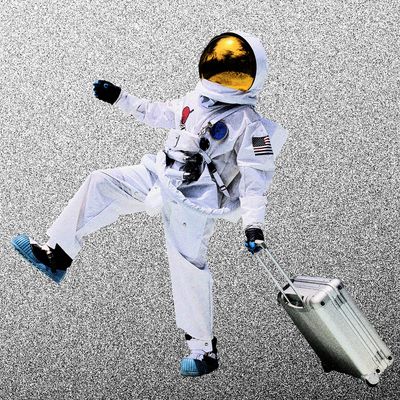
We’re at the dawn of a new era for space exploration, with thrill-seeking civilians boldly going where no tourist has gone before. Over 60 years after Soviet cosmonaut Yuri Gagarin became the first person in space, a handful of companies are planning to take non-astronauts with sufficiently massive bank accounts on a galactic tour: Tesla Founder Elon Musk’s SpaceX, Amazon CEO Jeff Bezos’s Blue Origin , and Richard Branson’s Virgin Galactic.
Here’s everything you need to know about the rise of space tourism, from which billionaires are leaving Earth imminently to when the rest of us might be able to join them.
What’s the history of civilian space travel?
The initial effort to send a civilian into space ended in disaster: In 1986, Christa McAuliffe was set to be the first civilian and teacher in space, but she and six crewmates were tragically killed during the explosion of Space Shuttle Challenger.
After that, NASA largely forbade the practice. But Russia’s then-struggling space program stepped up to the plate. On April 28, 2001, Dennis Tito paid a whopping $20 million for a seat on a Russian Soyuz rocket, becoming the first civilian to visit the International Space Station – humanity’s home away from home. According to Space.com , just seven space tourists have followed in his footsteps in the last 20 years, via Russia’s Space Agency. But the year ahead should be a busy one for the nascent industry, with more and more civilians reaching for the stars.
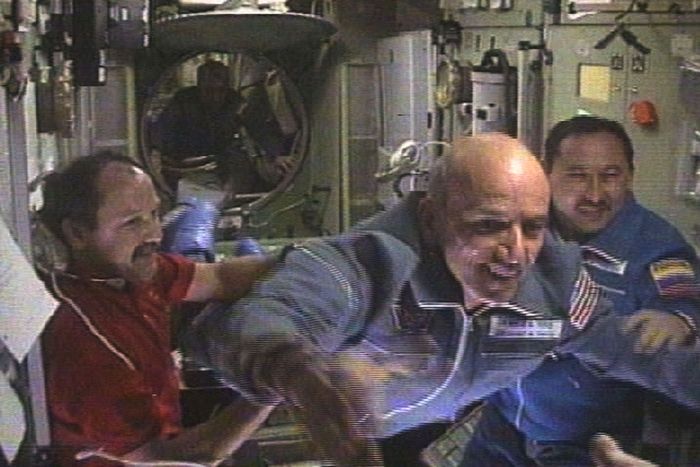
Who’s heading to space next?
The competition between the major players in the billionaire space race heated up when Bezos announced that he would jet off to the brink of space and back on July 20, the anniversary of the Apollo 11 moon landing. On July 1 – just hours after Bezos announced that in addition to his brother, he’d be joined on the flight by aviation pioneer Wally Funk – Richard Branson revealed that he would beat the Amazon founder into space by nine days. Branson will blast off on Virgin Galactic’s VSS Unity rocketplane on July 11.
Elon Musk’s SpaceX is planning what it’s billing as “the world’s first all-civilian space flight” in late 2021. The multiday flight into low Earth orbit, dubbed “Inspiration4” and funded by billionaire entrepreneur Jared Isaacman, aims to raise awareness for St. Jude Children’s Research Hospital and begin “a new era for human spaceflight and exploration.” The crew includes Isaacman, childhood cancer survivor Hayley Arceneaux, plus two others. It’s currently scheduled to launch “no earlier than September 15, 2021,” per the mission’s website.
SpaceX aims to keep the momentum going by partnering with Houston-based Axiom Space to send more everyday people into space using its Crew Dragon spacecraft, this time going to the International Space Station. Axiom’s first private ISS mission is set to launch “no earlier than January 2022.” Its second mission is the focus of the Discovery Channel reality-TV show Who Wants to Be an Astronaut? , in which contestants take on extreme challenges for a chance at a ticket to the ISS. Axiom Space plans to eventually host civilian space station jaunts every six months.
What does this cost?
Unsurprisingly, going to space comes with a hefty price tag. Axiom passengers will pay the low, low price of $55 million for the flight and a stay on the ISS. Meanwhile, Virgin Galactic’s suborbital trips — where passengers can experience weightlessness for several minutes before falling back to Earth — are far more reasonable in cost, at $250,000 . Six hundred people have already made reservations for 90-minute flights on Branson’s SpaceShipTwo, Reuters reports. And while Bezos’s Blue Origin hasn’t announced official prices, an auction for a seat to join him and his brother on his brief sojourn to space in July went for a cool $28 million .
How safe is it?
Hollywood isn’t exaggerating: Going to space is inherently dangerous. Congress agreed in 2004 to largely let the space-tourism industry self-regulate, so there are few laws and restrictions on taking civilians into space.
“One way that the government could have gone was to say, ‘Hey, we’re going to certify the spacecraft, make sure that they’re safe and give them the stamp of approval,’” Mark Sundahl, an expert at space law at Cleveland State University, told Discover magazine . “But they didn’t go that way. Instead, they said ‘We’re going to prove we’re protecting space tourists by just requiring the companies to tell them that they may die, and then it’s up to them to make a decision if they want to take that risk or not.’ That’s the approach that the government took, and it is somewhat controversial.”
What other types of space tourism are in the works?
Strapping in on a rocket and blasting off into space isn’t the only type of travel available for those eager to leave this planet. Human space flight company Space Perspective is planning to fly passengers to the edge of space in a high-tech version of a hot-air balloon, “the size of a football stadium,” lifted by hydrogen. Flights are planned for early 2024, with tickets priced firmly at $125,000 per person.
For another out-of-this-world vacation, check out the company Orbital Assembly Corporation , which plans to open a luxury space hotel in 2027. The hotel, named Voyager Station, looks almost like a Ferris wheel floating in orbit and features a restaurant, gym, and Earth-viewing lounges and bars. A three-and-a-half-day stay is expected to cost up to $5 million, the Washington Post reports.
Are other celebrities planning to explore space?
A slew of stars have already bought their tickets to space with Virgin Galactic, among them Justin Bieber, Ashton Kusher, and Leonardo DiCaprio, according to the New York Daily News . Last year, Actor Tom Cruise and NASA announced their own collaboration to make a movie on the International Space Station.
When can the average person do this?
Once again, the biggest barrier to space is the price tag. But air travel was also once prohibitively expensive, with a one-way ticket across the country costing more than half the price of a new car ; one can expect similar price reductions in space travel. For now, partaking in a sweepstakes or reality show might be the best bet for those with tiny bank accounts and big dreams of taking to the stars.
This post was updated after Branson announced he would head to space on July 11.
- space tourism
- richard branson
- blue origin
- virgin galactic
Most Viewed Stories
- Is the Entire World Conspiring to Make It Look Like Trump Lost the Debate?
- Elon Musk’s Taylor Swift Response Is Worse Than You Think
- I Examined Donald Trump’s Ear — and His Soul — at Mar-a-Lago
- Aaron Rodgers Is Holding on for Dear Life
- Trump’s Bad Debate Cost Him Nearly $500 Million
- How J.D. Vance and the Online Right Sabotaged Trump at the Debate
Editor’s Picks
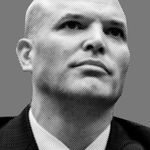
Most Popular
- Is the Entire World Conspiring to Make It Look Like Trump Lost the Debate? By Jonathan Chait
- Elon Musk’s Taylor Swift Response Is Worse Than You Think By Margaret Hartmann
- I Examined Donald Trump’s Ear — and His Soul — at Mar-a-Lago By Olivia Nuzzi
- Aaron Rodgers Is Holding on for Dear Life By Will Leitch
- Trump’s Bad Debate Cost Him Nearly $500 Million By Kevin T. Dugan
- How J.D. Vance and the Online Right Sabotaged Trump at the Debate By Jonathan Chait
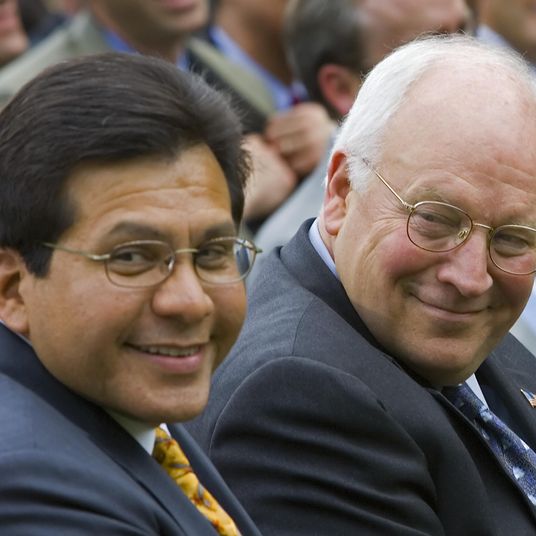
What is your email?
This email will be used to sign into all New York sites. By submitting your email, you agree to our Terms and Privacy Policy and to receive email correspondence from us.
Sign In To Continue Reading
Create your free account.
Password must be at least 8 characters and contain:
- Lower case letters (a-z)
- Upper case letters (A-Z)
- Numbers (0-9)
- Special Characters (!@#$%^&*)
As part of your account, you’ll receive occasional updates and offers from New York , which you can opt out of anytime.

- Login/Register
- Solar System
- Exotic Objects
- Upcoming Events
- Deep-Sky Objects
- Observing Basics
- Telescopes and Equipment
- Astrophotography
- Space Exploration
- Human Spaceflight
- Robotic Spaceflight
- The Magazine
Six ways to buy a ticket to space in 2021
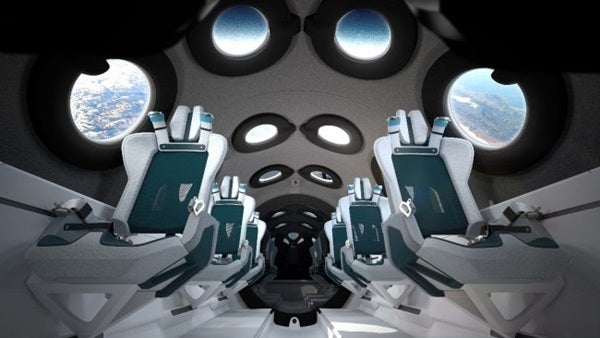
Earlier this month, SpaceX’s Crew Dragon capsule safely ferried NASA astronauts Doug Hurley and Robert Behnken back to Earth following a multi-month trip to the International Space Station (ISS). No privately built spacecraft had ever carried humans into orbit before. But unlike SpaceShipOne, which was a single craft built specifically to win a prize, there are multiple models of the Crew Dragon, each designed to be reused.
It’s finally looking like the exciting era of space tourism is about to erupt. A handful of so-called “new space” companies are now competing to sell space tourists trips on private spacecraft. Each one has a slightly different means of reaching space, and not all of them will get you all the way into orbit. But as long as you’re rich, you should have no problem purchasing your ticket to space.
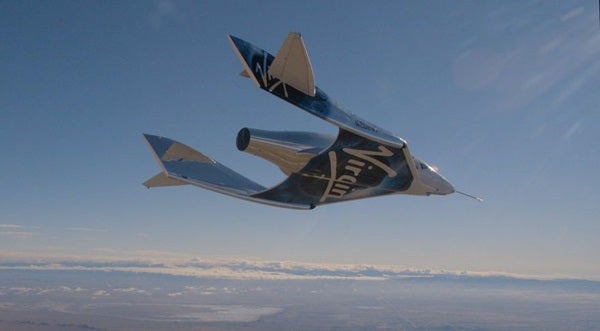
Virgin Galactic
SpaceShipOne was retired after just three successful spaceflights, but the technology lives on in Virgin Galactic’s Spaceship Unity . Like its predecessor, Virgin Galactic’s rocketplane drops from a specially engineered aircraft before boosting itself to 50 miles (80 kilometers) in altitude. That’s high enough for Virgin Galactic’s pilots to earn their astronaut badges. However, others define space via the so-called Kármán line, the generally accepted boundary between Earth’s atmosphere and space that sits 62 miles (100 kilometers) above our planet’s surface.
Virgin Galactic’s goal is to become “the world’s first commercial spaceline,” and eventually they’ll offer regular flights from Spaceport America in southern New Mexico. The company is planning to begin regular flights in early 2021, with CEO Richard Branson slated as the first non-professional pilot to travel on Spaceship Unity .
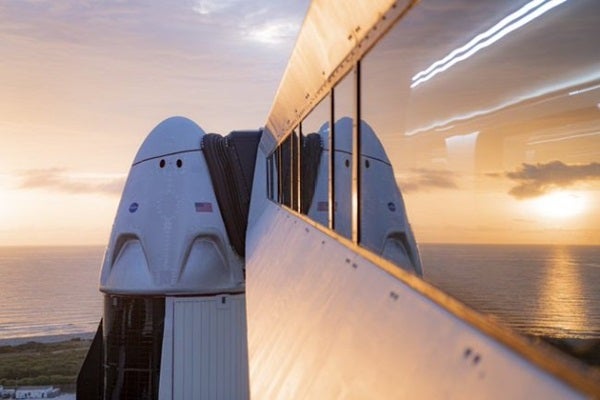
SpaceX is the only private rocket company to ever send a human into orbit. They’re also the only company now NASA-certified to send people to circle Earth. So, when will SpaceX start selling tickets to private citizens for trips to space? In the past, Elon Musk has said that the spacecraft could have a bright future carrying private passengers into orbit. And SpaceX recently announced that it has already sold seats on future Crew Dragon flights through other companies that are handling the logistics.
Ultimately though, Musk’s goal is to settle Mars. And to do that, he needs a bigger spacecraft. That’s why SpaceX’s engineers are working feverishly on its Starship, which is still under development. If the enormous spaceship works, it could literally rocket dozens of space tourists at a time between a number of destinations on Earth, or perhaps throughout the inner solar system. The company says that Starship would be able to travel between any two locations on Earth in less than one hour.
SpaceX is confident enough in their vessel that they already sold a Starship flight around the Moon to Japanese billionaire Yusaku Maezawa. No human has traveled to the Moon in nearly 50 years, and Maezawa, a fashion designer and online clothing retailer, has said he’ll take a group of artists with him.
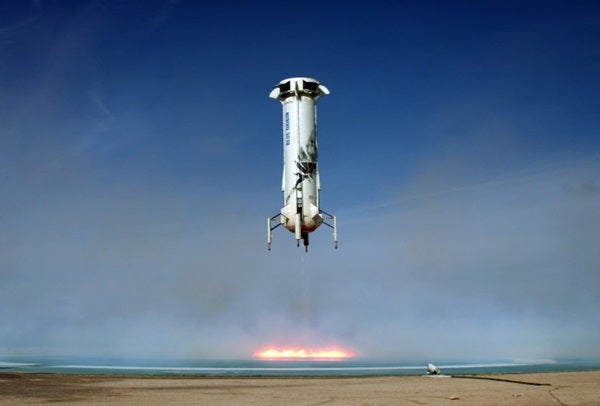
Blue Origin
Jeff Bezos started his rocket company, Blue Origin, back in 2000. And he’s been selling Amazon stock to pump billions of dollars into the effort ever since. Like SpaceX, they’re prioritizing reusable rockets and spacecraft that can drastically reduce the cost associated with spaceflight.
Much of Blue Origin’s effort has gone into developing a pair of rockets: New Shepard and New Glenn.
New Shepard can carry six people inside a suborbital capsule some 60 miles (100 km) into space. Blue Origin has already flown a dozen test flights, and they’re still planning several additional tests before launching passengers. However, in March, Axios reported that Blue Origin could send passengers into space in 2020, though COVID-19 has caused delays across the space industry. If the company can still get its space capsule tested in 2020, it could be on course for paid flights in 2021.
Meanwhile, Blue Origin has announced that it will soon start selling tickets. The company’s website doesn’t list the price of a Blue Origin trip, but Bezos has previously said their space tourists can expect to pay hundreds of thousands of dollars to fly in its New Shepard capsule.
The company is also working hard on their New Glenn rocket, a heavy-lift, reusable launch vehicle that Blue Origin has already invested more than $2.5 billion into developing. It’s larger than SpaceX’s Falcon Heavy rocket, but smaller than the rocket planned with Starship. That size could eventually enable regular passenger trips into orbit and even beyond. The company will need that capacity, too. Blue Origin’s goal is to one day have millions of people living and working in space.
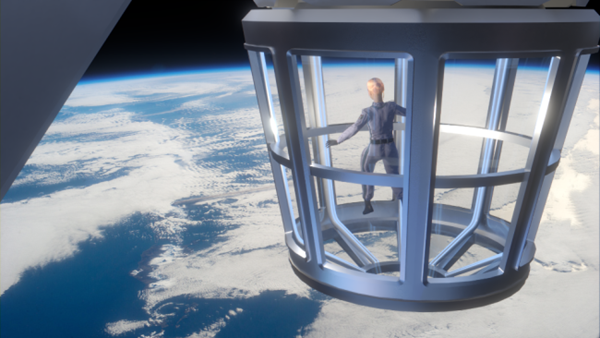
Axiom Space’s goal is to create the world’s first commercial space station. In the meantime, they’ve inked a deal to send a crew of private citizens to the ISS aboard SpaceX’s Crew Dragon capsule in October 2021.
Axiom’s initial crewed mission, dubbed Ax1, should send three paying astronauts to the ISS. Each ticket reportedly costs $55 million. And while it might seem like there’s a small pool of potential ticket buyers at that rate, in the U.S. alone, roughly 75,000 American households have that much money. Axiom also figures it’s just getting started selling tickets to space. In the near future, the company says it will send three crews a year to the ISS.
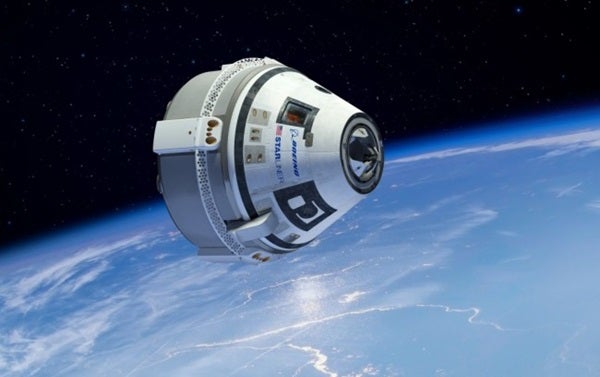
Back in 2014, NASA selected two companies — SpaceX and Boeing — to receive multibillion-dollar contracts to build spacecraft that could ferry astronauts to the ISS. SpaceX made good on the first crewed flight of its Commercial Crew Program contract earlier this year. Meanwhile, Boeing has yet to get its Starliner spacecraft safely to the ISS and back. Their first test flight reached orbit but failed to make the space station, and a NASA review outlined numerous necessary fixes.
Boeing will attempt another uncrewed test flight next year. And if all goes well, they could fly to the ISS by late 2021.
But once Boeing is flying to and from the ISS, the iconic aerospace company is also technically allowed to fly private passengers to the space station. They’ve been quiet on this option, but NASA has said they’d accommodate passengers at a rate of $35,000 per night.
Boeing has also hired a corporate test pilot astronaut, Christopher Ferguson. He’s been training alongside NASA’s astronauts and will be among the first to fly on Starliner. He might not count as a space tourist, but Ferguson will ultimately be part of an entirely new group of professional astronauts that work for private companies, not national space agencies.
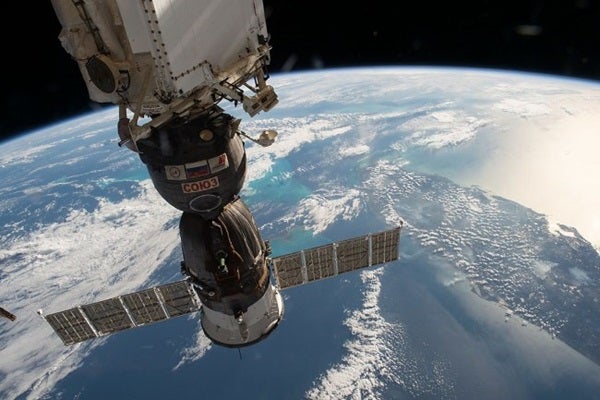

Space Adventures
Space Adventures is an American company that offers private spaceflights to the ISS and, eventually, the moon. Since their founding in 1998, the company has sold a number of other spaceflight related experiences, like simulated zero-gravity airplane flights. And unlike their competitors, Space Adventures has sent space tourists into orbit, too. They’ve been responsible for over half a dozen paid trips to the ISS that made use of Russian spacecraft.
Most recently, they booked a launch to the space station on Russia’s veteran Soyuz spacecraft, which is set for December 2021. The mission, dubbed Soyuz MS-20, will fly with a lone cosmonaut and two Space Adventures tourists.
Space Adventures has arranged another path to get paying customers into space, too. They recently announced a deal with SpaceX that will put four space tourists in a SpaceX capsule and send them into orbit around Earth. How much will it cost? For now, both companies are keeping the cost of these tickets private. But those who do make the trip should get an excellent show. The mission will orbit at several times the height of the ISS.
Unfortunately, few of us have enough disposable income to fund a trip beyond Earth’s atmosphere. But with at least a half dozen ways for the wealthy to purchase a ticket into space next year, the hope is that the cost will continue to decline. And if that happens, you might be closer than you think to regularly having your rocket pass checked by the TSA.
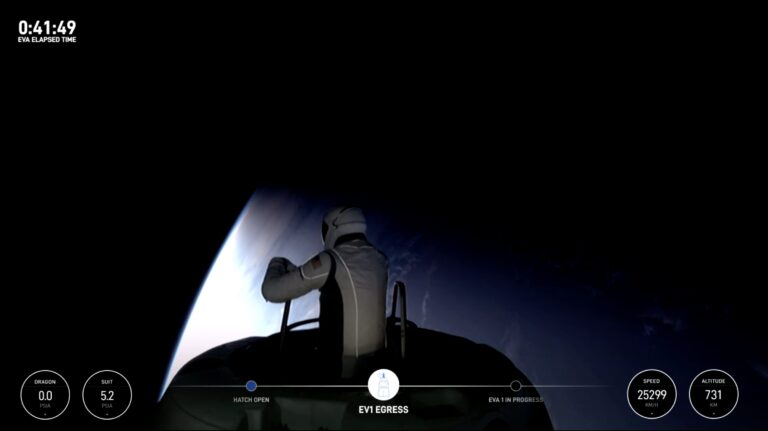
SpaceX Polaris Dawn crew completes historic private spacewalk
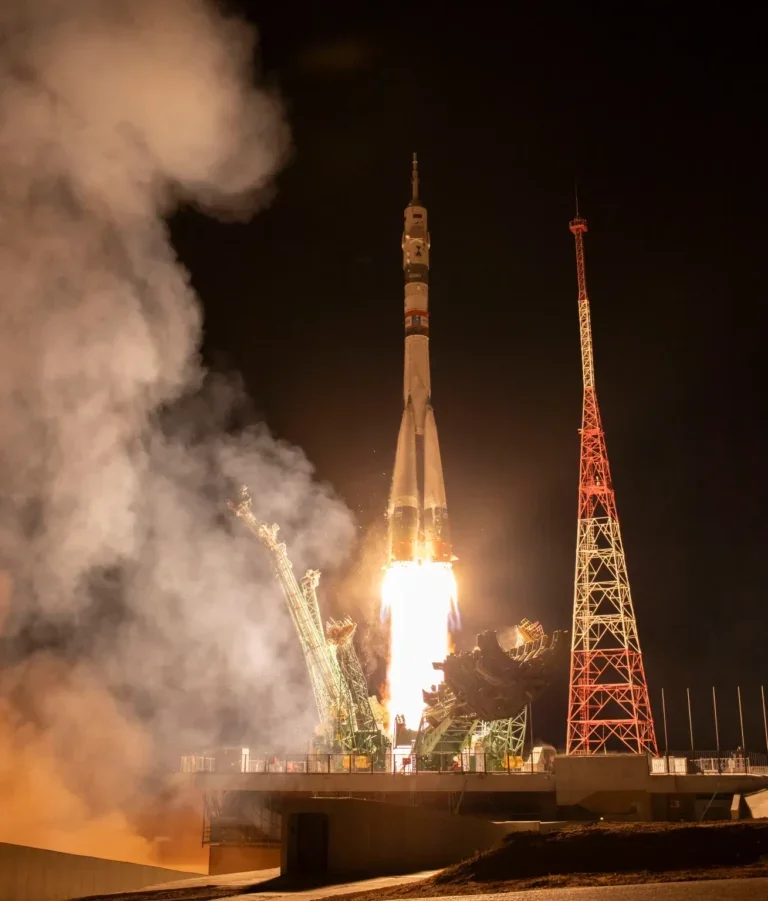
Don Pettit, NASA’s oldest active astronaut, begins mission aboard ISS
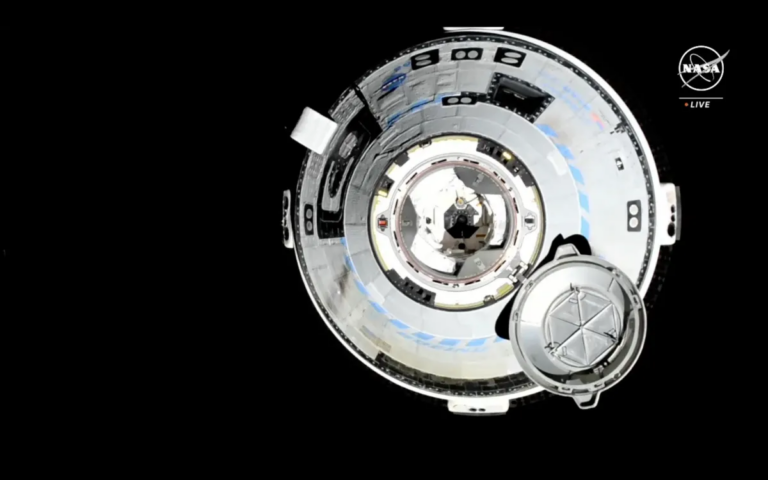
Opinion: A former astronaut details what Starliner’s uncrewed return means for NASA, Boeing, and the astronauts still up in space
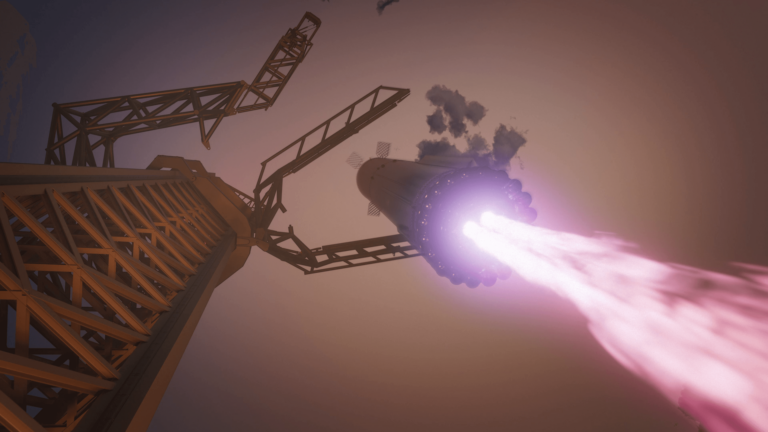
SpaceX takes aim at FAA after latest Starship launch delay
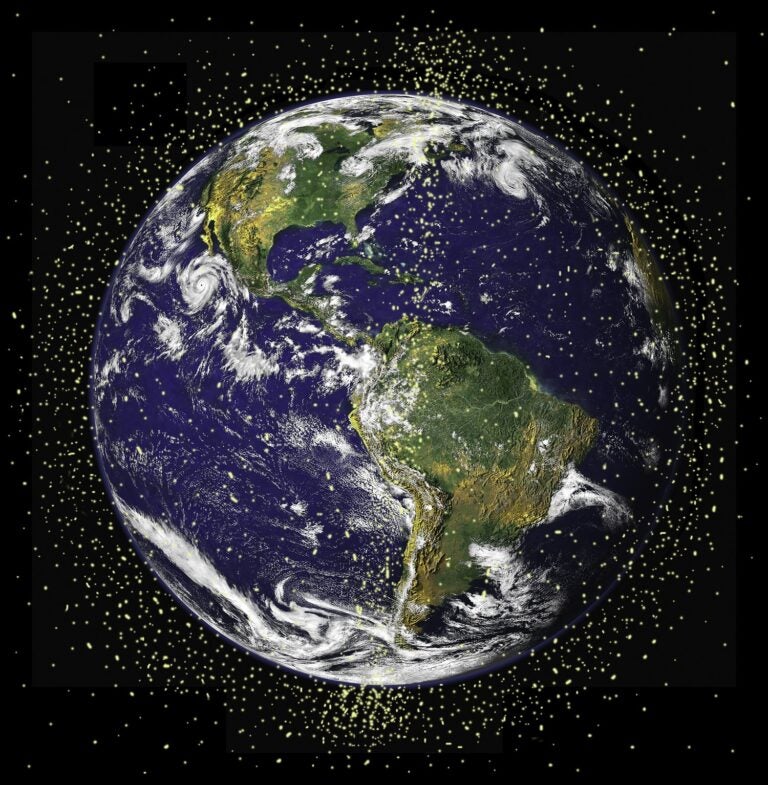
Small, untrackable pieces of space junk are cluttering low Earth orbit
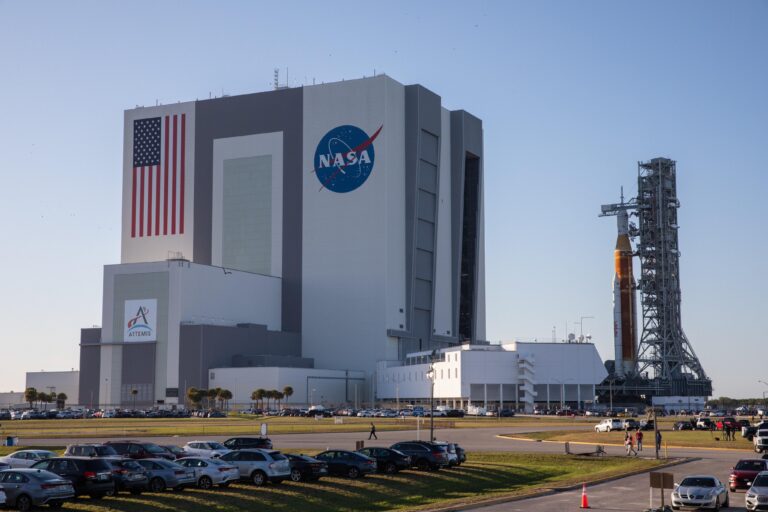
Shortsighted, aging NASA faces uncertain future, says report to Congress
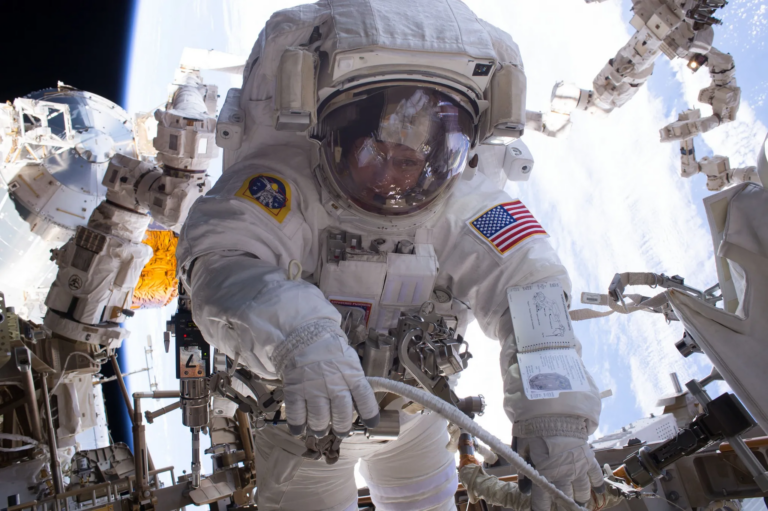
Upcoming Polaris Dawn spacewalk will push the envelope
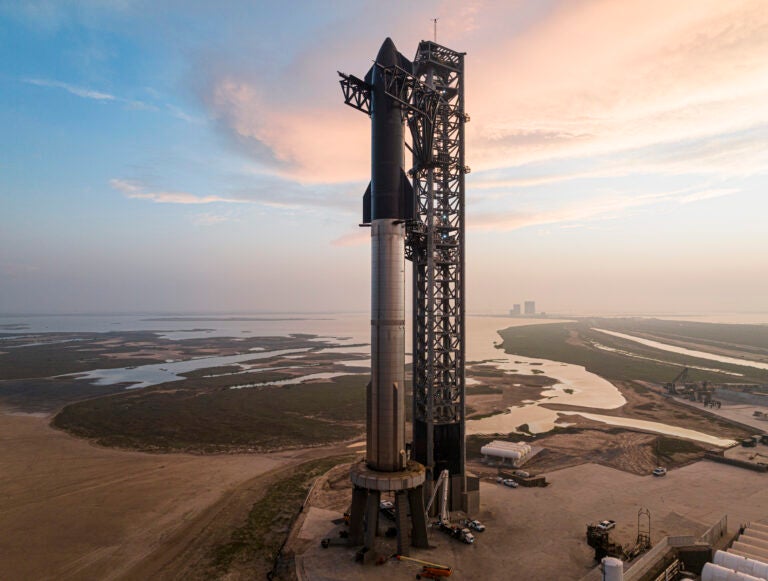
Why the SpaceX Starship launch pad matters
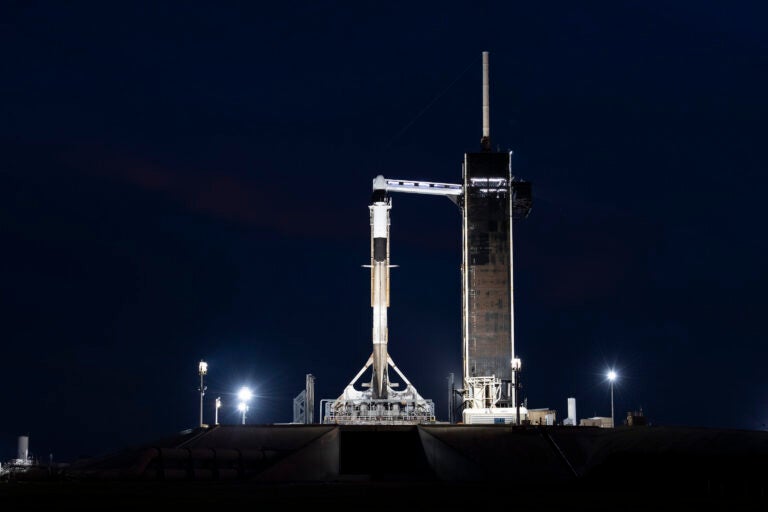
Polaris Dawn launched Tuesday morning: How to watch the mission’s spacewalk
How Much Does it Cost to Travel to Space?
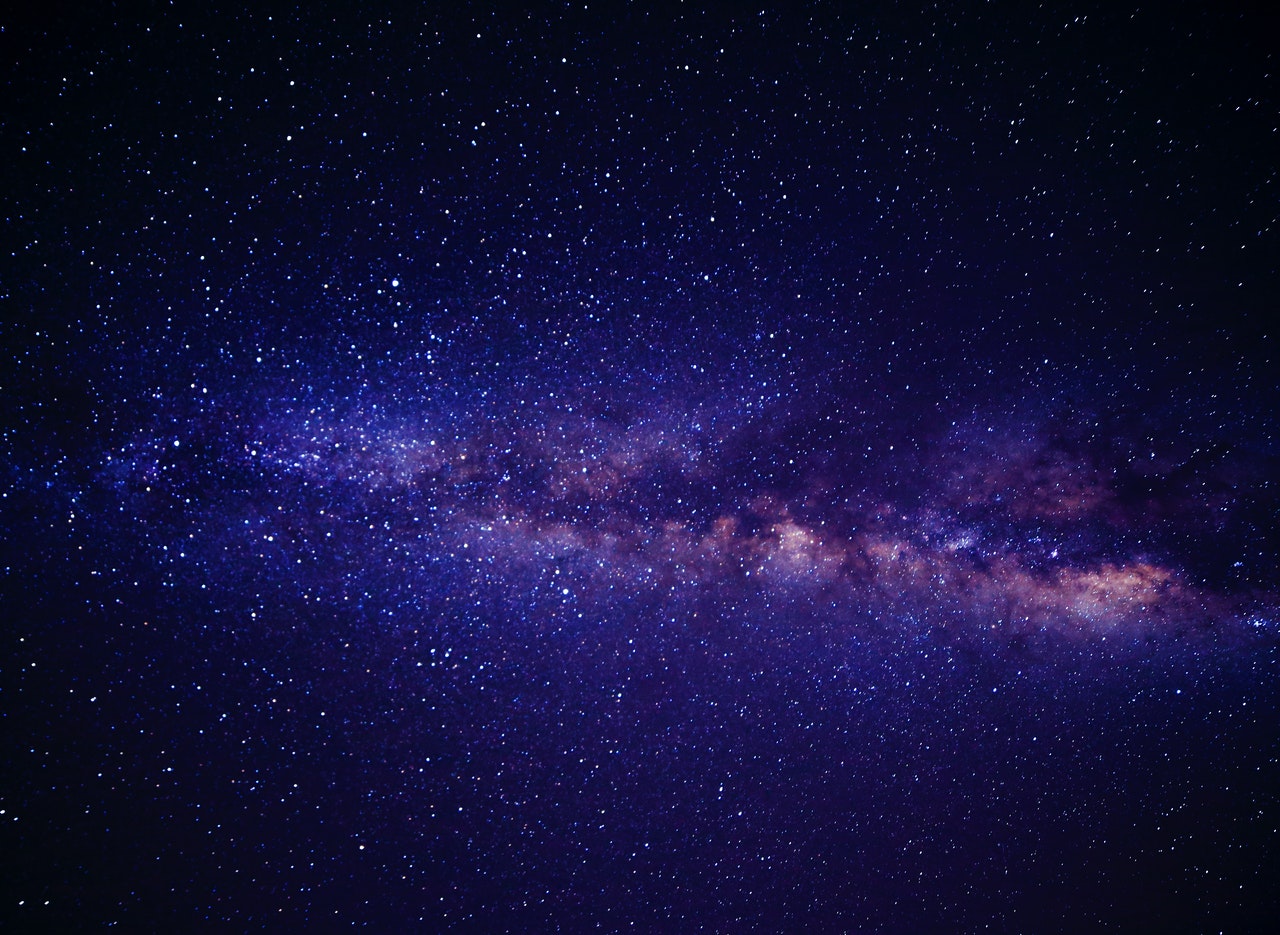
Fast facts:
- As of right now (2021), the cost of booking a trip to space in the near future is approximately $250,000 .
- The immediate cost of a trip to space (via something like SpaceX) in the next 2-3 years is in the tens of millions per passenger .
- In the medium-future, the cost of individual tickets into space will drastically fall in price.
- Based on estimations, it is likely that the cost of space tourism tickets will be around $10,000 – $25,000 within the next twenty years .
How much will it cost for a private citizen to travel to space?
Since the Champion Traveler research team is heavily focused on private travel (as opposed to how much it costs astronauts to fly to space), all data used in this article will be based on the idea of privatized space tourism. This industry is expected to hit a major milestone in the 2020s, and it is likely that space tourism will become not only more common but more affordable within the next twenty to fifty years.
As of right now, based on early estimations from several major private space exploration companies (SpaceX, Blue Origin, and Virgin Galactic), the first privatized space travel will cost adventurous travelers somewhere around $250,000 for a short trip into Earth’s orbit. This quarter of a million dollar price tag for private space tourism will likely include somewhere between a few hours and a few days orbiting the Earth.
This type of space travel will remain expensive for several years, but as all things improve and become more efficient within the process, the cost will very likely start to decrease within a matter of years. There is likely a heavier price tag on the first couple of trips simply because of the historic nature of them. As market demand balances out and more space tourism is available, it seems likely the cost of a ticket for a short adventure into space will be somewhere around $10,000 to $25,000 depending on the length of the trip and the number of passengers included on each flight.
When will space travel become more affordable?
As of right now (2021), space travel is more likely a pipe dream for many than a realistic vacation. A quarter of a million dollars for one trip into outer space is likely not something many people will be able to afford in the short term. But as costs drop and space tourism becomes more efficient (and likely sees more competition), ticket prices for space travel will fall back down to Earth.
As for how long this will take, within 20 years (by about the year 2040), space travel should see a gradual decrease in price to somewhere in the $10,000 – $25,000 range (in 2021 dollars) where it will likely flat line for a while based on current cost estimations of scale, fuel costs, production costs, and regulation.
It is possible that we will see privatized space tourism drop down to somewhere in the $5,000 – $10,000 range as well if more competition enters the market if demand stays high.
Will space travel ever be cheaper than air travel?
The problem with comparing space travel to the current price of air travel is that the current market for air travel remains in high demand for both tourism and business purposes.
In the medium term, the only purpose that space travel as tourism will serve is for quick trips into space and back. There won’t be necessarily, at least in the foreseeable future, a spike in travel demand for business purposes and thus the overall market demand for space tourism will remain relatively small.
Because of this, it is very unlikely that we will ever see space tourism anywhere near comparable flights for something like a transatlantic flight to Europe from the United states for $500-700.
When will space travel be available to more people?
Based on current development of spaceships capable of carrying a larger number of private citizens, we expect that by the 2030s it will be possible to book a ticket via one of the current major space exploration brands (SpaceX, Blue Origin), and that we also will likely see between two and five new companies enter the market in that time.
With a growing number of companies producing spacecraft capable of allowing for space tourism, there will likely be hundreds of available seats in a given year within the next decade, and thousands of available seats a year after that.
Is space tourism safe?
This is something nobody has enough of a firm grasp on to say definitively one way or the other just yet, but it seems fair to assume given how long it has taken to commercialized space travel, that the early flights will take every precaution possible.
It’s fully reasonable to expect that over the course of space tourism expansion there will be accidents and likely death, but at the same time, the same can still be said about traditional air travel. While statistically considered extremely safe, there will always be a minimal amount of risk associated with any type of travel.
What companies offer private space travel?
There are many now-defunct companies who have tried to establish footing in space tourism, but as of now there seem to be three main companies we will be watching closely when it comes to offering one of the grandest possible adventures for private citizens:
- SpaceX – Led by Elon Musk, this company seems the most likely to begin ramping up space tourism within the next two decades. They have a planned launch for their first space tourists in the coming two years.
- Virgin Galactic – Led by Richard Branson, this company has been around the longest (of the surviving companies), but has yet to launch their first commercial space tourists into space.
- Blue Origin – Led by Jeff Bezos, Blue Origin has focused mostly on commercial space travel, but has also discussed expanding their efforts into personal space travel in the near future.
Location Search
About our travel data.
We compile multiple data sources from top tier travel companies around the world to create our guides and advisories. Our goal is to provide critical, timely and accurate information for all of your travel needs.
How much does space travel cost?
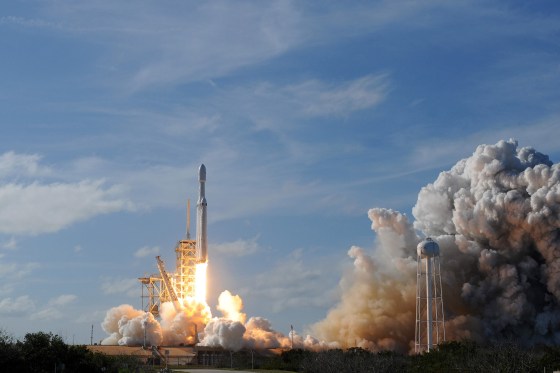
Spaceflight has traditionally been a government-led activity — and it's never been cheap. But the stratospheric cost of putting people and payloads into space is finally starting to fall, thanks in part to the rise of SpaceX and other private spaceflight companies.
Here’s a look at what it costs to go to space, whether it’s another satellite that needs to be placed in orbit or an adventurous billionaire looking for a joyride around the moon .
Sending up a satellite
Using its 230-foot-tall Falcon 9, SpaceX charges $62 million to send into orbit commercial satellites weighing up to 50,000 pounds. The closest American competitor is the United Launch Alliance Atlas V, which starts at $73 million for a 41,000-pound payload .
Science Sign Up for the Daily MACH Newsletter
Those are just starting prices; government agencies typically pay more for a long list of extra services. The Air Force, for example, is paying SpaceX $96.5 million to launch a GPS satellite in 2019 .
Flying to the International Space Station
Since NASA mothballed its space shuttles in 2011, NASA has relied on the Russian Soyuz spacecraft to get astronauts to the ISS. Russia has been steadily raising the price of Soyuz seats, reaching $82 million each in 2015. The agency last purchased Soyuz seats for $75 million apiece in 2017.
NASA hopes to end its reliance on Russia in 2019, when SpaceX's Crew Dragon and Boeing's Starliner capsules begin “taxi” flights to the ISS. Seats on those spacecraft are expected to cost about $58 million .
How much would I have to pay for a flight into space?
Depending on where you're going, a ticket could set you back anywhere from $250,000 to tens of millions of dollars.
If you're looking simply to cross the 62-mile-high Karman line that marks the boundary between the upper atmosphere and outer space, Virgin Galactic says it will take you there for $250,000. The company says about 650 people already have tickets for the suborbital flights, to be made aboard a winged vehicle called SpaceShipTwo. A date for customer flights has yet to be announced.
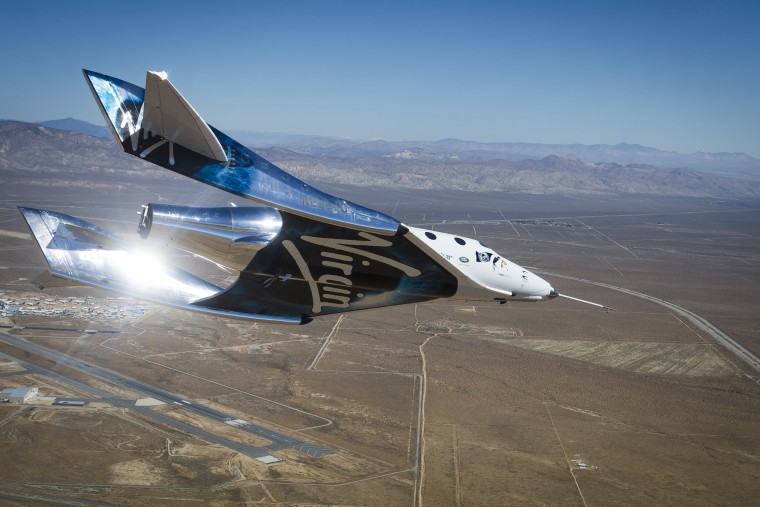
Jeff Bezos’ rocket company, Blue Origin, plans something similar — sending space tourists on brief suborbital flights using its New Shepard rocket system. The company has yet to set ticket prices or say when paid flights might begin.
Virgin Galactic and Blue Origin passengers will join the fewer than a dozen private citizens who have funded their own trips into space. From 2001 to 2009, the Vienna, Virginia-based firm Space Adventures worked with Russia’s space agency to send eight people to the ISS on flights lasting 10 or more days.

Space A colossal elevator to space could be going up sooner than you ever imagined
The world's first private astronaut, a wealthy American engineer named Dennis Tito, reportedly paid $20 million to spend eight days in space in 2001. More recently, Guy Laliberté, the co-founder of Cirque du Soleil, shelled out $35 million for an ISS trip in 2009 . Space Adventures still advertises Soyuz flights and plans to start booking trips to the ISS aboard Boeing’s Starliner.
In September 2018, SpaceX CEO Elon Musk announced that Japanese billionaire Yusaku Maezawa would ride the company’s yet-to-be-built Big Falcon Rocket on a trip around the moon. Neither Musk nor Maezawa, who said he would take along seven artists, would discuss the mission’s cost.
What about other rockets?
Small satellites may qualify for a free ride to space through NASA’s Educational Launch of Nanosatellites program, which helps universities and research groups fly standardized satellites called CubeSats aboard rockets as secondary payloads.
If your satellite can’t hitch a free ride, you can book a NASA sounding rocket to the edge of space for as little as $1 million . For orbital flights of payloads weighing less than 500 pounds, Los Angeles-based Rocket Lab offers launches of its Electron rocket from New Zealand for about $5 million .
From there, the price goes up steeply. Northrop Grumman's Pegasus rocket, which is air-launched from the belly of a jumbo jet, can place 1,000 pounds in orbit for about $40 million . Stratolaunch, a new venture bankrolled by Microsoft co-founder Paul Allen, plans to launch Pegasus rockets from its own colossal airplane before offering an expanded line of rockets capable of carrying up to 13,000 pounds. The company has yet to disclose prices.
NASA is developing its Space Launch System, which will carry astronauts to the moon and Mars. The rocket’s per-launch cost has not been disclosed, but the agency now spends at least $2 billion per year on the project. The maiden flight isn’t expected until 2020.
WANT MORE STORIES ABOUT SPACE TRAVEL?
- NASA solar probe to go where no spacecraft has gone before
- Space shuttle relic to be resurrected as deep-space habitat
- The animals that paved the way for humans in space
FOLLOW NBC NEWS MACH ON TWITTER , FACEBOOK , AND INSTAGRAM .
SpaceX Polaris Dawn: Billionaire Jared Isaacman becomes first person to take part in private spacewalk
Daredevil billionaire Jared Isaacman, 41, was the first to exit the capsule after opening the hatch as a body camera showed his ascent through the narrow opening.
News reporter @SunnyNadal
Thursday 12 September 2024 13:40, UK
Please use Chrome browser for a more accessible video player

An American billionaire has become the first person to take part in a private spacewalk - against the spectacular backdrop of the Earth.
A spacewalk is considered one of the most dangerous activities an astronaut can do in orbit.
SpaceX Polaris Dawn spacewalk - live updates

It was delayed by around four hours earlier this morning - with no explanation given - before final safety checks of the spacesuits and equipment were carried out and SpaceX officials confirmed the mission was "go for a spacewalk".
First images broadcast from inside the Dragon capsule showed the four-strong crew preparing for the historic event - and sharing fist bumps with each other.

Billionaire Jared Isaacman, 41, was the first to exit the capsule - joining a small, elite group of spacewalkers who until today had included only professional astronauts.
After opening the hatch, a body camera showed his ascent through the narrow opening before incredible footage showed the spacewalk taking place to huge cheers from mission control at Cape Canaveral in Florida.
"It's gorgeous," he said, in awe of what he could see, as he eased out of the spacecraft into the vacuum of space, hundreds of miles from Earth.
He kept a hand or foot attached to the capsule the whole time as he flexed his arms and legs to see how the new spacesuit held up.
"The handsfree demonstration is very comparable to the trainer, in terms of the foot restraint," he added, as he tested his spacesuit.
He had said before lift-off earlier this week: "Whatever risk is associated with it, it is worth it."
"I wasn't alive when humans walked on the moon," he said.
"I'd certainly like my kids to see humans walking on the moon and Mars, and venturing out and exploring our solar system."
The tech entrepreneur blasted into space from Florida before dawn on board a SpaceX Falcon 9 rocket on Tuesday for the five-day flight - along with mission pilot Scott Poteet, 50, a retired US Air Force lieutenant colonel, and SpaceX employees Sarah Gillis, 30, and Anna Menon, 38, both senior engineers at the company.

Ms Gillis followed Mr Isaacman out of the capsule on Thursday to carry out the same mobility tests.
They each had 12ft (3.6m) tethers but did not unfurl them, and instead bobbed up and down in weightlessness, no higher than their knees out of the capsule.
The mission, called Polaris Dawn, to test a new line of spacesuits is the Elon Musk -led company's riskiest mission yet - from a space capsule that doesn't have a safety airlock, and in suits far slimmer than the bulky protective layers worn by NASA astronauts.
It is the first of three funded by Mr Isaacman - a pilot and the founder of electronic payment company Shift4.
He has refused to say how much he is paying for the missions, but they are believed to have cost hundreds of millions of dollars based on Crew Dragon's roughly $55m (£42m) per-seat price for other flights.

Keep up with all the latest news from the UK and around the world by following Sky News
Ms Gillis could be heard saying "pretty good" as she carried out her spacewalk - before she followed Mr Isaacman back into the capsule, after being told what sounded like she had less than six minutes of oxygen supply left.
"Pressure indicates good seal," mission control told the astronauts, reassuringly, as the hatch was shut again.
"That was really cool," said one of the presenters on the SpaceX live stream.
Mr Menon and Mr Poteet remained inside the spacecraft during the spacewalk.

Polaris Dawn was planned down to the minute with little room for error. The crew spent two-and-a-half years training with SpaceX mission simulations.
There were a few glitches, however - Mr Isaacman had to manually pull the hatch open instead of pushing a button on board, and Ms Gillis reported seeing bulges in the hatch seal.
Only government astronauts with several years of training have done spacewalks in the past.
There have been around 270 on the International Space Station (ISS) since it was set up in 2000, and 16 by Chinese astronauts on Beijing's Tiangong space station.
Related Topics
Private Space Travel Is Worth the Risk, If Done Right, Experts Say
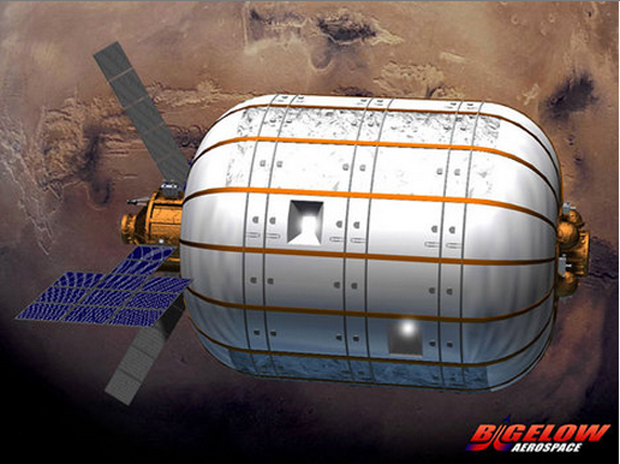
NEW YORK — Space tourism and commercial space mining projects are ushering in a new era of human spaceflight, but their success of private spaceflight will depend on ensuring safety and reducing the cost, experts say.
Spaceflight companies such as SpaceX or Space Adventures, Ltd. could make the dream of space travel a reality for some, and may take on the role NASA once had in pushing the frontier of space, a panel of experts said during the 2014 Isaac Asimov Memorial Debate debate here Wednesday (March 19) at the American Museum of Natural History.
Some speakers looked to U.S. history for comparison to the potential of private spaceflight today. [ The First Space Tourists: A Photo Timeline ]
The 19th-century adventurers Lewis and Clark, for example, weren't the actual people who colonized Montana, said Michael Gold, director of Washington, D.C., operations and business growth for the Bigelow Aerospace, a company that is developing private inflatable space stations . It was the homesteaders, the farmers and the businessmen who followed later.
"You can't just go to space like Montana homesteaders and pitch a tent," said Neil deGrasse Tyson, director of the museum's Hayden Planetarium and the host of the new show " Cosmos: A Spacetime Odyssey ." Tyson moderated Wednesday night's debate, which had the theme of "Selling Space."
In addition to Gold, the panel included several luminaries in human spaceflight, including Wanda Austin, president and CEO of The Aerospace Corporation; John Logsdon, space policy analyst and professor emeritus at George Washington University; Elliot Pulham, CEO of the Space Foundation; Tom Shelley, president of Space Adventures, Ltd. and Robert Walker, former chairman of the House Committee on Science, Space and Technology.

The risk of private space travel
Get the Space.com Newsletter
Breaking space news, the latest updates on rocket launches, skywatching events and more!
Like all new forms of travel, private spaceflight carries significant risks. But the panelists said they didn't see the risks as insurmountable.
Ultimately, a bad safety record would hurt companies. "There's a perception that commercial space is less safe," Gold said. But "if we have a bad day, we lose everything."
But beyond having a good safety record, it's important to understand the risks, Austin said. "It doesn’t matter how safe [a spaceship] has been, it matters what one you're sitting on."
Tyson said for him, it's about the reward. He wouldn't accept a 1 percent risk of dying to get to low-Earth orbit, but he might accept a 10 percent risk of dying to be the first person on Mars .
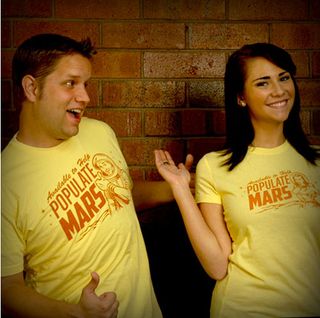
A costly voyage
The price of space travel is another hurdle facing the fledgling commercial spaceflight industry.
Space Adventures, Ltd., caters to space tourists (multimillionaire Dennis Tito was their first customer ) by buying space on the Russian Soyuz spacecraft. Right now, the cost of a seat is $52 million.
A price tag like that restricts space travel to "the 1 percent of the 1 percent," Tyson said, to which Shelley replied, "you've got to start somewhere."
And NASA actually paid more than $52 million per astronaut, other panelists pointed out. The space agency currently pays about $70 million per seat to fly American astronauts on a Russian Soyuz spacecraft , under its latest deal with Russia's Federal Space Agency.
Still, it will be a while before a family who goes to Disneyland for vacation can save up enough to go take a vacation in space, Shelley admitted.
Then there's the issue of the carbon footprint from allowing rich people to take a joyride in space. "We've got to pollute for a little while before people invest in a product that doesn't pollute," Shelley said. (Though the idea wasn't too popular with the audience.)
Tyson later brought up the topic of buying property in space. "I understand you want to sell space on the moon ?" he asked Gold.
The Outer Space Treaty prevents countries from claiming land in space. But allowing individuals to buy property could be an incentive to go to space, Gold said. "You should be able to enjoy the fruits of your labor."
Finally, the panelists made a passing mention of China and other countries with space programs. If China were to put military bases on Mars, Tyson said, the United States would send manned missions there in a heartbeat.
After the debate, Tyson and the panelists met with journalists in a roundtable discussion that lasted late into the evening, with discussions ranging from asteroid mining to Tyson reflecting on the success of "Cosmos."
So would Tyson himself take the chance to go to space?
Absolutely, he told Space.com. But he said would rather take the 100th trip than the first.
Follow Tanya Lewis on Twitter and Google+ . Follow us @Spacedotcom , Facebook and Google+ . Original article on Space.com .
Join our Space Forums to keep talking space on the latest missions, night sky and more! And if you have a news tip, correction or comment, let us know at: [email protected].
SpaceX launches 5 giant BlueBird smartphone satellites for AST SpaceMobile, lands rocket (video)
NASA astronaut, 2 cosmonauts arrive at ISS aboard Russian Soyuz capsule (video)
SpaceX's Starship won't be licensed to fly again until late November, FAA says
Most Popular
- 2 Sun fires off X-class solar flare, increasing aurora viewing chances into weekend
- 3 SpaceX's private Polaris Dawn astronauts talk US flag and kids' books from orbit on historic spaceflight (videos)
- 4 Polaris Dawn: World's 1st commercial spacewalk was history's 20th stand-up EVA
- 5 Satellites watch Hurricane Francine make landfall as a Category 2 storm in Louisiana (video)
share this!
September 11, 2024
This article has been reviewed according to Science X's editorial process and policies . Editors have highlighted the following attributes while ensuring the content's credibility:
fact-checked
reputable news agency
SpaceX Polaris Dawn crew set for historic private spacewalk
by Issam AHMED

After trekking deeper into space than any humans in the last half-century, a pioneering private crew is set to make history Thursday with the first-ever spacewalk by non-professional astronauts.
The SpaceX Polaris Dawn mission, led by fintech billionaire Jared Isaacman, launched early Tuesday from the Kennedy Space Center in Florida, reaching a peak altitude of 870 miles (1,400 kilometers).
That's more than three times higher than the International Space Station, in a region of space called the inner Van Allen radiation belt -- a zone teeming with dangerous, high-energy particles.
Now, with their Dragon spaceship's elliptical orbit reduced to a low point of roughly 120 miles and high of 430 miles, the crew of four is gearing up for the mission's centerpiece: an audacious extravehicular activity (EVA) scheduled for 0958 GMT on Thursday, with a backup window on Friday.
SpaceX pushed the time back by a few hours early Thursday, without explaining why. It plans a webcast of the event starting about an hour beforehand, on its website.
'Bit of a dance'
Prior to the hatch opening, the crew will complete a "prebreathe" process to purge nitrogen from their blood, preventing decompression sickness caused by nitrogen bubbles. The cabin pressure will then be gradually reduced to match that of space.

After it's opened, Isaacman and crewmate Sarah Gillis, a SpaceX engineer, will take turns peeking out from a structure attached to the hatch dubbed "Skywalker," equipped with hand and footholds.
"It'll look like we're doing a little bit of a dance," Isaacman quipped during a recent press conference.
In reality, they're stress-testing SpaceX's next-generation suits, which boast heads-up displays, helmet cameras and enhanced joint mobility systems.
However, they won't float away on a tether like early spacefarers such as Soviet cosmonaut Alexei Leonov or NASA's Ed White did in 1965. Instead, they'll cling to the spacecraft as it orbits Earth at roughly 17,500 mph.
Since the Crew Dragon capsule lacks an airlock, the entire crew will be exposed to the vacuum of space for the duration of the spacewalk, around two hours. After the hatch is closed, the cabin will be repressurized, and oxygen and nitrogen levels will return to normal.
Mission pilot Scott Poteet and SpaceX engineer Anna Menon will monitor vital support systems during the activity, while Isaacman and Gillis are expected to each spend about 15 to 20 minutes partially outside the craft.
"The risk is greater than zero, that's for sure, and it's certainly higher than anything that has been accomplished on a commercial basis," former NASA administrator Sean O'Keefe told AFP.
"This is another watershed event in the march toward commercialization of space for transportation," he added, comparing the crewmates to early aviators who paved the way for modern air travel.

First of three Polaris missions
All four underwent more than two years of training in preparation for the landmark mission, logging hundreds of hours on simulators as well as skydiving, centrifuge training, scuba diving and summiting an Ecuadoran volcano.
Beyond their spacewalk, the crew will test laser-based satellite communications between the spacecraft and the vast Starlink satellite constellation.
They'll also carry out 36 scientific experiments, including tests on contact lenses with embedded microelectronics to monitor changes in eye pressure and shape in space.
Polaris Dawn is the first of three missions under the Polaris program, a collaboration between Isaacman and SpaceX.
Financial terms of the partnership remain under wraps, but Isaacman, the 41-year-old founder and CEO of Shift4Payments, reportedly poured $200 million of his fortune into leading the 2021 all-civilian SpaceX Inspiration4 orbital mission.
The final Polaris mission aims to be the first crewed flight of SpaceX's Starship, a prototype next-generation rocket that is key to founder Elon Musk's ambitions of colonizing Mars.
Explore further
Feedback to editors

Scientists discover crude oil decimates sea otter buoyancy
9 hours ago

Over two-million acres of floodplain development occurred in US in last two decades, study finds
10 hours ago

Dams built to prevent coastal flooding can worsen it

Floquet engineering tunes ultracold molecule interactions and produces two-axis twisting dynamics

Enzyme-inspired catalyst puts chemicals in right position to make ethers

Fluorescent nanomaterial could transform how we visualize fingerprints
11 hours ago

Experimental data help unravel the mystery surrounding the creation of heavy elements in stars

Discovery about ice layer formation in ice sheets can improve sea level rise predictions
12 hours ago

Researchers solve long-standing mystery of alumina surface structure

Microbe dietary preferences found to influence effectiveness of carbon sequestration in deep ocean
Relevant physicsforums posts, rotation curve of a gas disk in an elliptical galaxy.
8 hours ago
Our Beautiful Universe - Photos and Videos
Solar activity and space weather update thread, exploring the sun: amateur solar imaging techniques.
Sep 10, 2024
Looking for information about spectroscopy isotopes and stellar formation
Sep 5, 2024
The James Webb Space Telescope
More from Astronomy and Astrophysics
Related Stories

SpaceX launches all-civilian crew for first private spacewalk

SpaceX Polaris Dawn launch pushed back after helium leak
Aug 27, 2024

SpaceX postpones historic mission featuring first private spacewalk
Aug 28, 2024

SpaceX a week away from first private spacewalk
Aug 20, 2024

SpaceX Polaris Dawn mission set to launch early Friday
Sep 3, 2024

Who is on SpaceX's historic private spacewalk mission?
Recommended for you.

Tech billionaire pulls off first private spacewalk high above Earth
19 hours ago

Voyager 1 team accomplishes tricky thruster swap
Sep 11, 2024

Keeping mold out of future space stations

SpaceX launches billionaire to conduct the first private spacewalk

Two astronauts are left behind in space as Boeing's troubled capsule returns to Earth empty
Sep 7, 2024
Let us know if there is a problem with our content
Use this form if you have come across a typo, inaccuracy or would like to send an edit request for the content on this page. For general inquiries, please use our contact form . For general feedback, use the public comments section below (please adhere to guidelines ).
Please select the most appropriate category to facilitate processing of your request
Thank you for taking time to provide your feedback to the editors.
Your feedback is important to us. However, we do not guarantee individual replies due to the high volume of messages.
E-mail the story
Your email address is used only to let the recipient know who sent the email. Neither your address nor the recipient's address will be used for any other purpose. The information you enter will appear in your e-mail message and is not retained by Phys.org in any form.
Newsletter sign up
Get weekly and/or daily updates delivered to your inbox. You can unsubscribe at any time and we'll never share your details to third parties.
More information Privacy policy
Donate and enjoy an ad-free experience
We keep our content available to everyone. Consider supporting Science X's mission by getting a premium account.
E-mail newsletter
Billionaire steps out of SpaceX capsule for first private spacewalk hundreds of miles above Earth
'Back at home, we all have a lot of work to do. But from here, it sure looks like a perfect world,' said tech entrepreneur Jared Isaacman
Author of the article:
You can save this article by registering for free here . Or sign-in if you have an account.
Article content
A billionaire stepped out for the first private spacewalk Thursday, teaming up with SpaceX on the daring endeavor hundreds of miles above Earth.
Billionaire steps out of SpaceX capsule for first private spacewalk hundreds of miles above Earth Back to video
Tech entrepreneur Jared Isaacman and his crew waited until their capsule was depressurized before popping open the hatch. Isaacman emerged first, joining a small elite group of spacewalkers who until now had included only professional astronauts from a dozen countries.
Enjoy the latest local, national and international news.
- Exclusive articles by Conrad Black, Barbara Kay and others. Plus, special edition NP Platformed and First Reading newsletters and virtual events.
- Unlimited online access to National Post and 15 news sites with one account.
- National Post ePaper, an electronic replica of the print edition to view on any device, share and comment on.
- Daily puzzles including the New York Times Crossword.
- Support local journalism.
Create an account or sign in to continue with your reading experience.
- Access articles from across Canada with one account.
- Share your thoughts and join the conversation in the comments.
- Enjoy additional articles per month.
- Get email updates from your favourite authors.
Don't have an account? Create Account
“Back at home, we all have a lot of work to do. But from here, it sure looks like a perfect world,” said Isaacman.
The commerical spacewalk the main focus of the five-day flight financed by Isaacman and Elon Musk’s company, and the culmination of years of development geared toward settling Mars and other planets.
All four on board donned SpaceX’s new spacewalking suits to protect themselves from the harsh vacuum. They launched on Tuesday from Florida, rocketing farther from Earth than anyone since NASA’s moonwalkers. The orbit was reduced by half — to 460 miles (740 kilometers) — for the spacewalk.
This first spacewalking test, expected to last about two hours, involved more stretching than walking. The plan called for Isaacman to keep a hand or foot attached to it the whole time as he flexed his arms and legs to see how the new spacesuit would hold up. The hatch sported a walker-like structure for extra support.
After about 15 minutes outside, Isaacman was to be replaced by SpaceX engineer Sarah Gillis to go through the same motions.
Each had 12-foot (3.6-meter) tethers but no intention of unfurling them or dangling at the end unlike what happens at the International Space Station, where astronauts routinely float out to do repairs at a much lower orbit.
More and more wealthy passengers are plunking down huge sums for rides aboard private rockets to experience a few minutes of weightlessness. Other have spent tens of millions to stay in space for days or even weeks. Space experts and risk analysts say it’s inevitable that some will seek the thrill of spacewalking, deemed one of the most dangerous parts of spaceflight after launch and reentry but also the most soul-stirring.
This operation was planned down to the minute with little room for error. Trying out new spacesuits from a spacecraft new to spacewalking added to the risk. So did the fact that the entire capsule was exposed to the vacuum of space.
Scott “Kidd” Poteet, a former Air Force Thunderbird pilot, and SpaceX engineer Anna Menon stayed strapped to their seats to monitor from inside. All four underwent intensive training before the trip.
Isaacman, 41, CEO and founder of the Shift4 credit card-processing company, has declined to disclose how much he invested in the flight. It was the first of three flights in a program he’s dubbed Polaris; this one was called Polaris Dawn. For SpaceX’s inaugural private flight in 2021, he took up contest winners and a cancer survivor.
Until Thursday, only 263 people had conducted a spacewalk, representing 12 countries. The Soviet Union’s Alexei Leonov kicked it off in 1965, followed a few months later by NASA’s Ed White.
— The Associated Press Health and Science Department receives support from the Howard Hughes Medical Institute’s Science and Educational Media Group. The AP is solely responsible for all content.
Postmedia is committed to maintaining a lively but civil forum for discussion. Please keep comments relevant and respectful. Comments may take up to an hour to appear on the site. You will receive an email if there is a reply to your comment, an update to a thread you follow or if a user you follow comments. Visit our Community Guidelines for more information.
U.S. presidential debate barely moves polls for Trump, Harris
Jamie sarkonak: jagmeet singh targets carbon tax in a flaccid attempt to imitate poilievre, b.c. parents seek changes after daughter, 13, dies of overdose in homeless encampment, kingston mayor wants safe injection site shut down after two killed, one seriously injured in attacks, cerb $5,000 income eligibility requirement violated charter rights, but not unconstitutional: ruling, no-makeup makeup: how to get the look.
From skincare to makeup, we're rounding up everything you need
The best Amazon deals in Canada right now
Take advantage of these Amazon Canada deals before they're gone
Advertisement 2 Story continues below This advertisement has not loaded yet, but your article continues below.
Editor favourites: Our top finds this month
Products we couldn’t get enough of this August
Litter-Robot 4 review: A self-cleaning litter box that doesn’t stink
Is the Litter-Robot 4 worth investing in? And will my cat actually use it?
The best online deals in the Canadian retail space right now
Good American, Indigo, Rare Beauty and Walmart, to name a few
This website uses cookies to personalize your content (including ads), and allows us to analyze our traffic. Read more about cookies here . By continuing to use our site, you agree to our Terms of Service and Privacy Policy .
You've reached the 20 article limit.
You can manage saved articles in your account.
and save up to 100 articles!
Looks like you've reached your saved article limit!
You can manage your saved articles in your account and clicking the X located at the bottom right of the article.

IMAGES
VIDEO
COMMENTS
With new advancements in spaceflight technology, the costs of space travel are decreasing, making the dream of spaceflight a little closer for us all. ... With private space companies, the opportunity for civilians to book a trip to space similar to booking a flight came closer to reality. Dennis Tito was the first private citizen to pay for a ...
2021 has been a busy year for private space tourism: overall, more than 15 civilians took a trip to space during this year. ... How much does it cost for a person to go to space? Virgin Galactic: $250,000 for a 2-hour suborbital flight at an altitude of 80 km; ... Most likely, the price for space travel will reduce overtime as well.
CAPE CANAVERAL, Fla. (AP) — A daredevil billionaire rocketed back into orbit Tuesday, aiming to perform the first private spacewalk and venture farther than anyone since NASA's Apollo moonshots.. Unlike his previous chartered flight, tech entrepreneur Jared Isaacman shared the cost with SpaceX this time around, which included developing and testing brand new spacesuits to see how they'll ...
Spacewalk complete: A four-person crew on a private mission aboard a SpaceX capsule, ... But the underlying ethos of SpaceX is to commercialize space travel and radically reduce costs, in the hope ...
Private stays on the space station will have a hefty price tag, according to NASA's 2019 announcement. It'll cost $11,250 per astronaut per day to use the life support systems and toilet ...
Each spot on Virgin's suborbital spaceplane, the cheapest way to space at the moment, will set somebody back $450,000. A single seat on Blue Origin's initial suborbital launch sold at auction ...
The Commercial Space Age Is Here. Private space travel is just the beginning. Summary. In May of 2020, SpaceX made history as the first private company to send humans into space. This marks not ...
Jason Lyon. By Debra Kamin. May 7, 2022. Ilida Alvarez has dreamed of traveling to space since she was a child. But Ms. Alvarez, a legal-mediation firm owner, is afraid of flying, and she isn't ...
Cost estimates vary from $10 million up to $37 million. [18] ... Many private space travelers have objected to the term space tourist, ... UniGalactic Space Travel Magazine is a bi-monthly educational publication covering space tourism and space exploration developments in companies like SpaceX, ...
Polaris Dawn lifts off from Pad 39A at the Kennedy Space Center in Florida early Tuesday morning. The crew is set to conduct the first private spacewalk ever in a matter of days.
Polaris Dawn, which aims to conduct the first-ever private spacewalk, lifted off atop a SpaceX Falcon 9 rocket today at 5:23 a.m. EDT (0923 GMT) from historic Launch Complex-39A at NASA's Kennedy ...
The Price for a Ticket to Space . These short trips cost between $250,000 and $500,000, but in April 2022, a truly out-of-this-world private trip to space launched with an even more astronomical ...
How much does it cost to go into space? It depends, says McAlister. For a trip on Virgin Galactic's SpaceShipTwo and Blue Origin's New Shepard, seats typically cost $250,000 to $500,000.
Human space flight company Space Perspective is planning to fly passengers to the edge of space in a high-tech version of a hot-air balloon, "the size of a football stadium," lifted by ...
In the meantime, they've inked a deal to send a crew of private citizens to the ISS aboard SpaceX's Crew Dragon capsule in October 2021. Axiom's initial crewed mission, dubbed Ax1, should ...
Every Space Tourism Package Available in 2021 Ranked: From $125K to $60 Million. From Virgin Galactic's suborbital ride to SpaceX's multi-day orbital voyage, we've rounded up every space tourism ...
NASA has said it will allow up to two private trips to the ISS a year, each lasting up to 30 days. The total cost of the trip would be around $50 million per person, the agency said. SpaceX's ...
The same goes for Virgin Galactic, which plans to begin private flights to space during 2022. It charged $250,000 for tickets until it paused ticket sales a few years ago. While it has said it ...
The tickets cost $75,000 per person, and you can request info on their website. As of 2019, World View Enterprises suggested they might be focusing less on space tourism and more on research and commercial business, but they're still a contender! 9. Bigelow Aerospace.
Fast facts: As of right now (2021), the cost of booking a trip to space in the near future is approximately $250,000. The immediate cost of a trip to space (via something like SpaceX) in the next 2-3 years is in the tens of millions per passenger. In the medium-future, the cost of individual tickets into space will drastically fall in price.
NASA is developing its Space Launch System, which will carry astronauts to the moon and Mars. The rocket's per-launch cost has not been disclosed, but the agency now spends at least $2 billion ...
Here's how it works. NASA's next 60 years will probably be very different than its first six decades. When the agency opened for business in 1958, private spaceflight was just a sci-fi dream ...
The tech entrepreneur blasted into space from Florida before dawn on board a SpaceX Falcon 9 rocket on Tuesday for the five-day flight - along with mission pilot Scott Poteet, 50, a retired US Air ...
The total ticket price is $450,000 with an initial deposit of $150,000, largely refundable, except for a $25,000 Future Astronaut Community Access fee. The company's first Virgin Galactic space ...
The risk of private space travel. Get the Space.com Newsletter. Breaking space news, the latest updates on rocket launches, skywatching events and more! ... Right now, the cost of a seat is $52 ...
Engaging in research and development of new technologies related to space travel and exploration. ... Since the 1980s, various private initiatives have started up to pursue the private use of space. Traditional costs to launch anything to space have been high—on the order of tens of thousands of US dollars per kilogram—but by 2020, costs on ...
During the last 60 years, roughly 600 people have flown into space, and the vast majority of them have been government astronauts. For a suborbital trip on Virgin Galactic's SpaceShipTwo and Blue Origin's New Shepard, seats typically cost $250,000 to $500,000. Flights beyond that to actual orbit—a much higher altitude—are far more ...
This handout image released by SpaceX on September 10, 2024 shows a view of Earth and the Dragon capsule's Skywalker shortly after the Polaris Dawn crew launched into orbit.
Travel. Travel Canada; Travel USA ... Jared Isaacman arrives at the Kennedy Space Center in Cape Canaveral, Fla., Monday, Aug. 19, 2024, to prepare for an upcoming SpaceX private human spaceflight ...
Air travel can be hectic. ... sometimes you just want a place to grab a quick nap or enjoy some quiet time in your own personal space. Minute Suites offers private rooms—ideal for air travelers ...